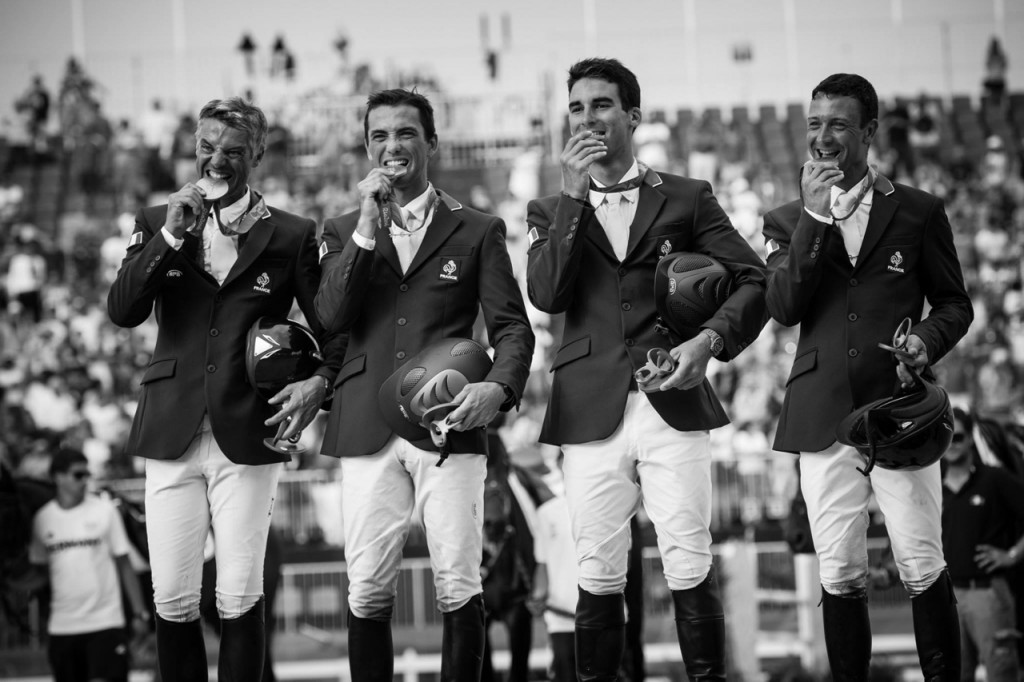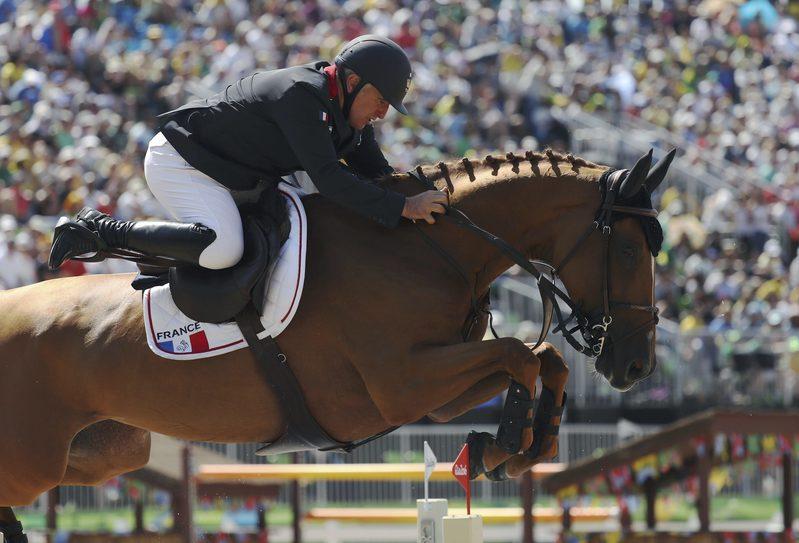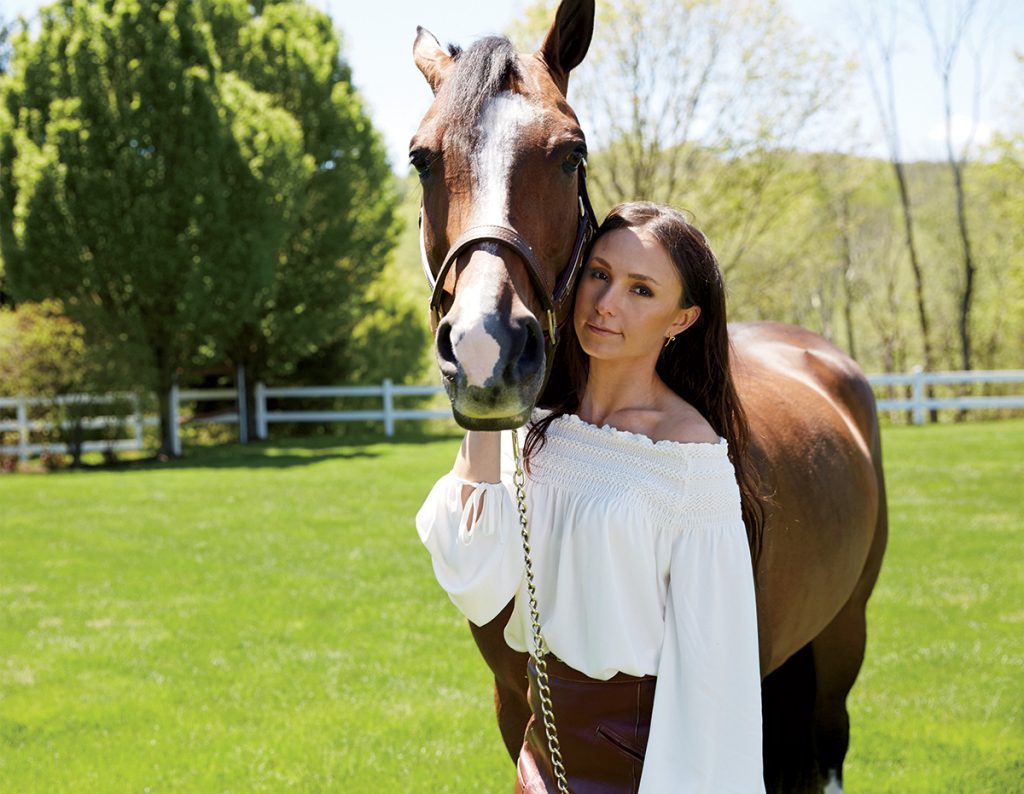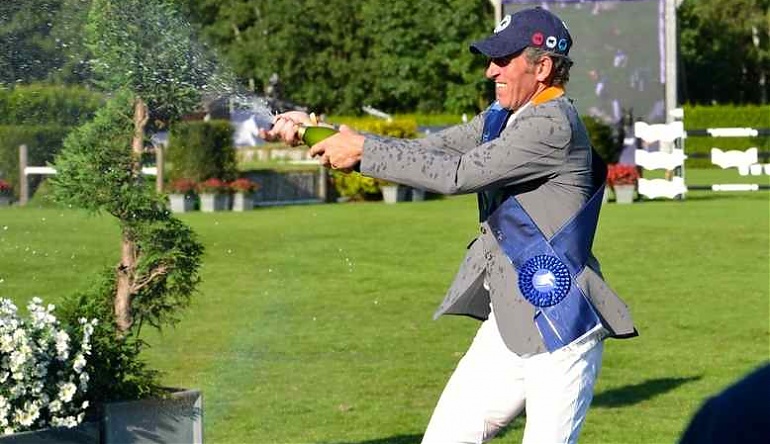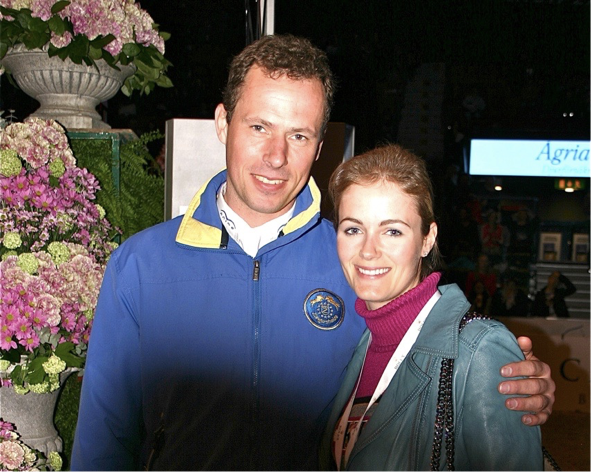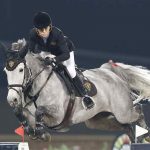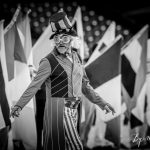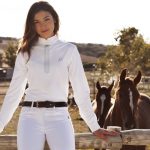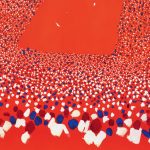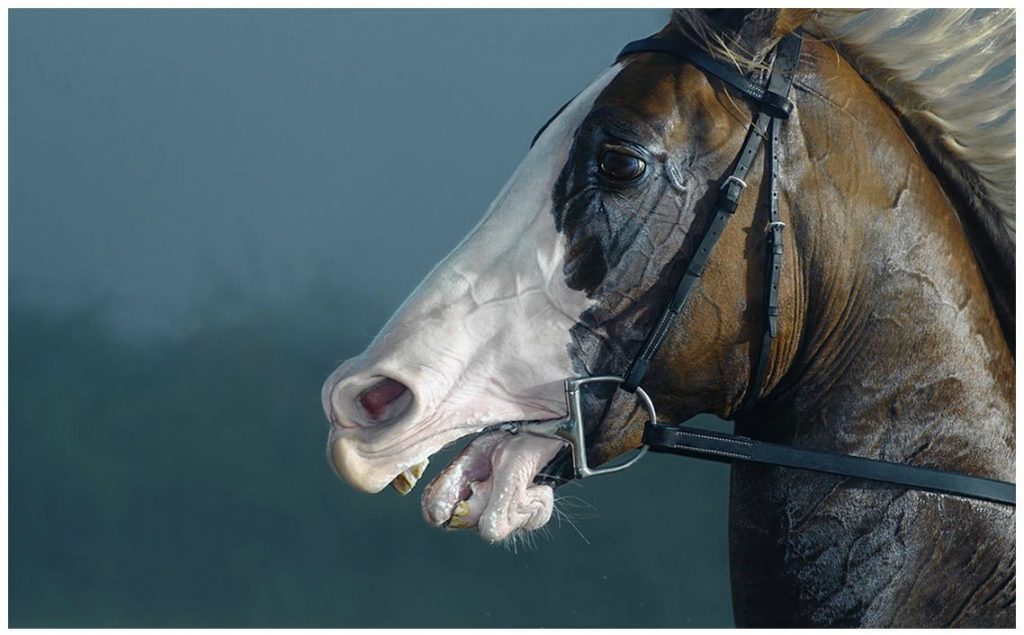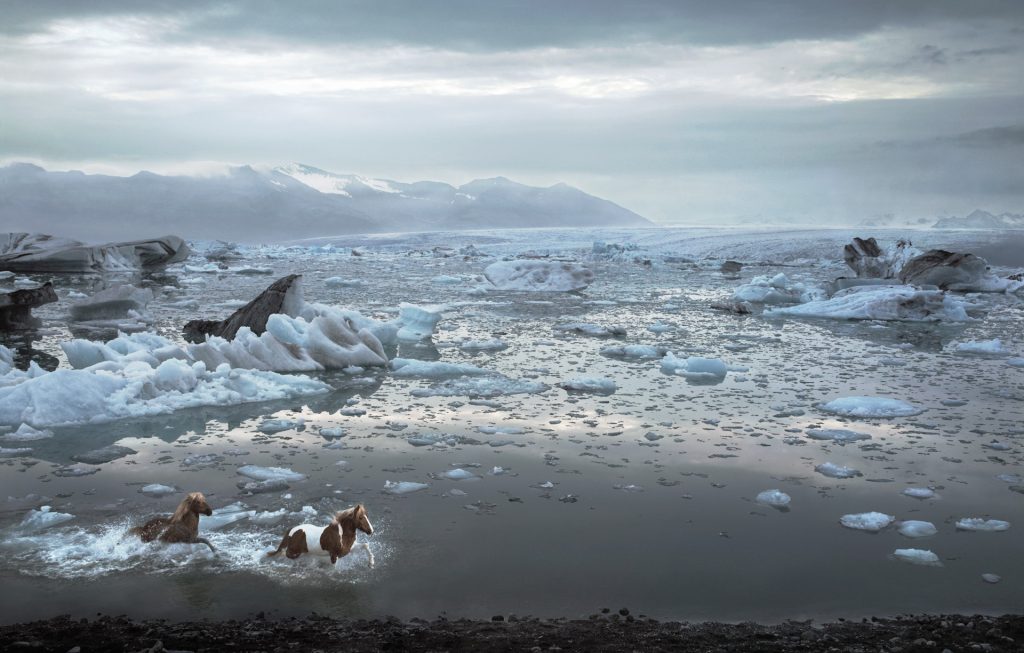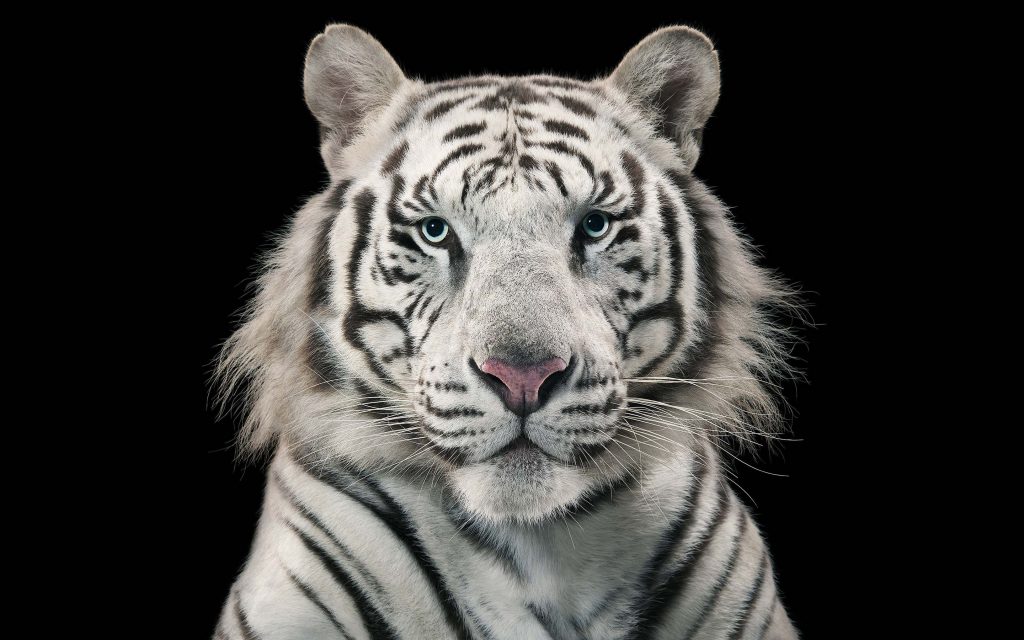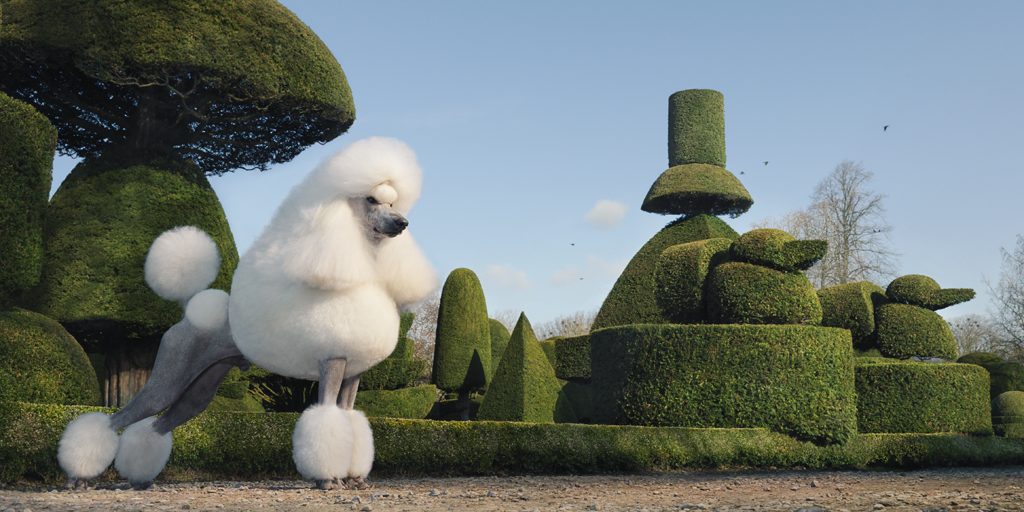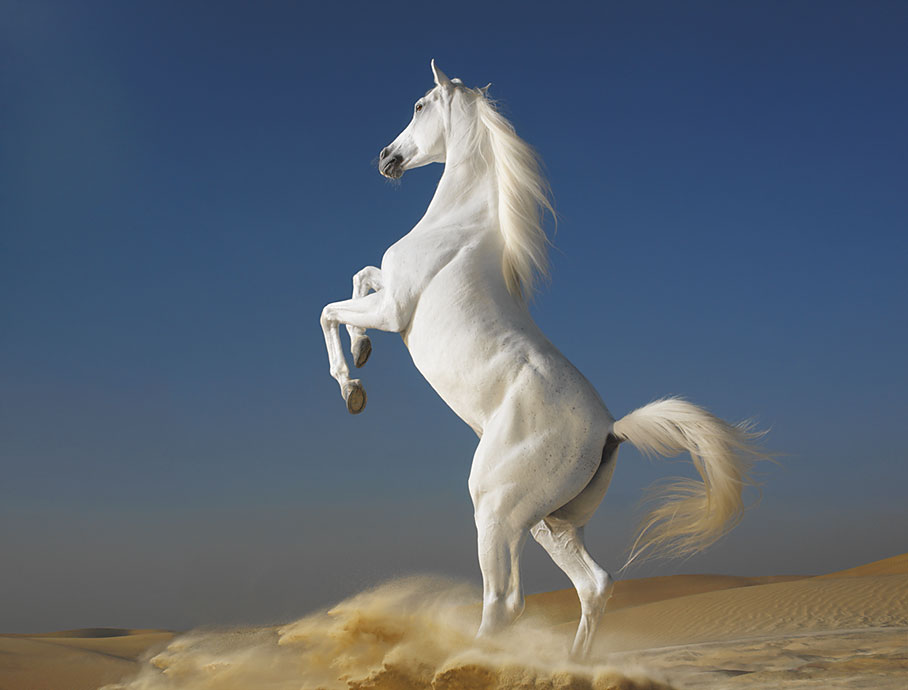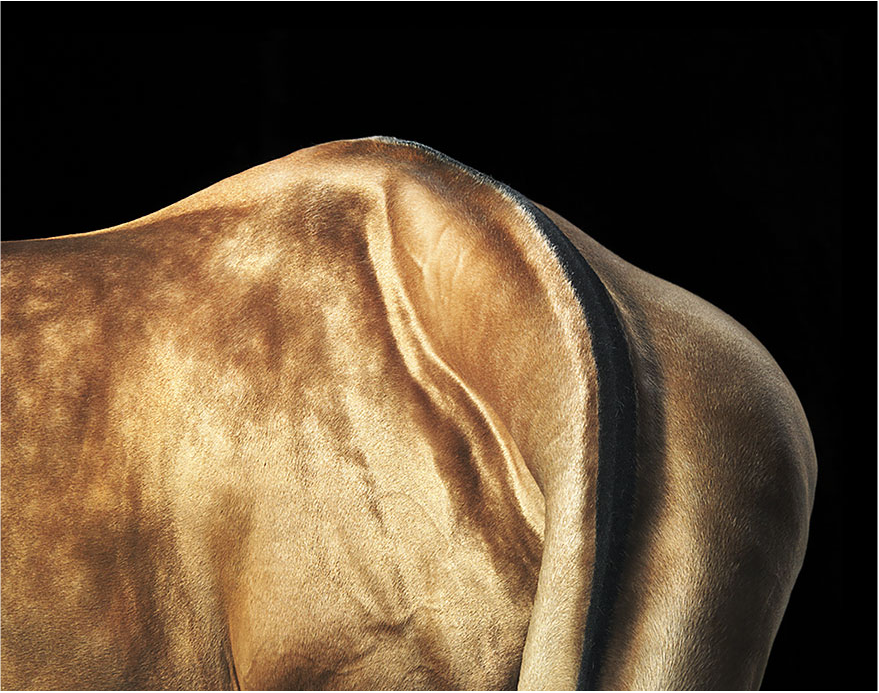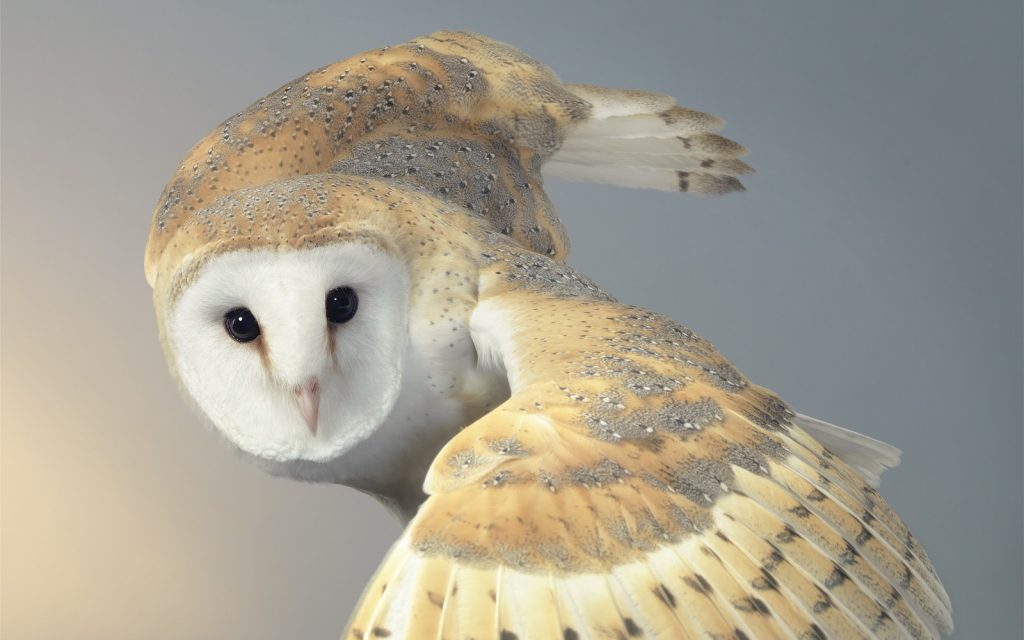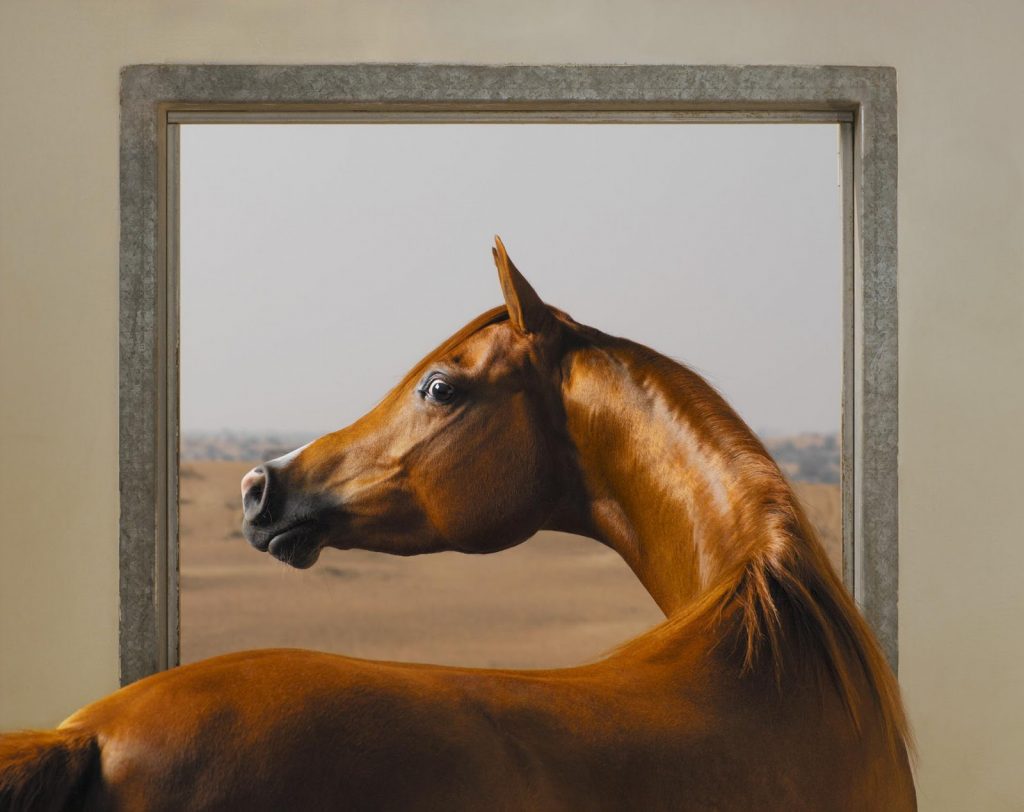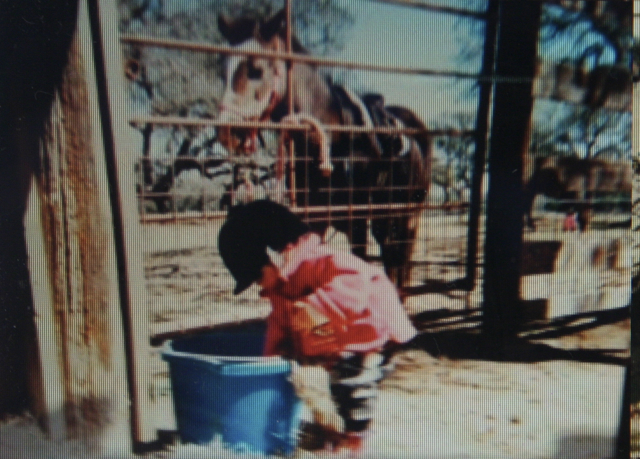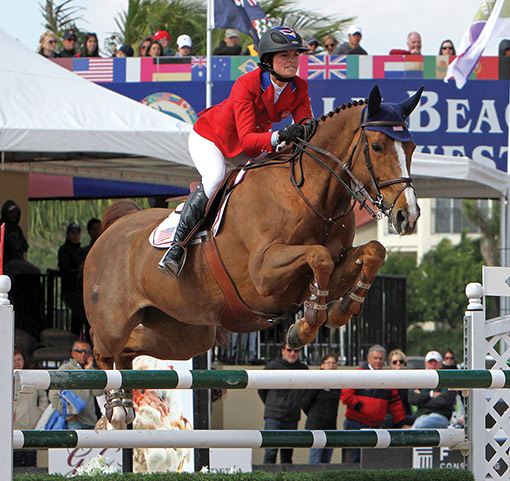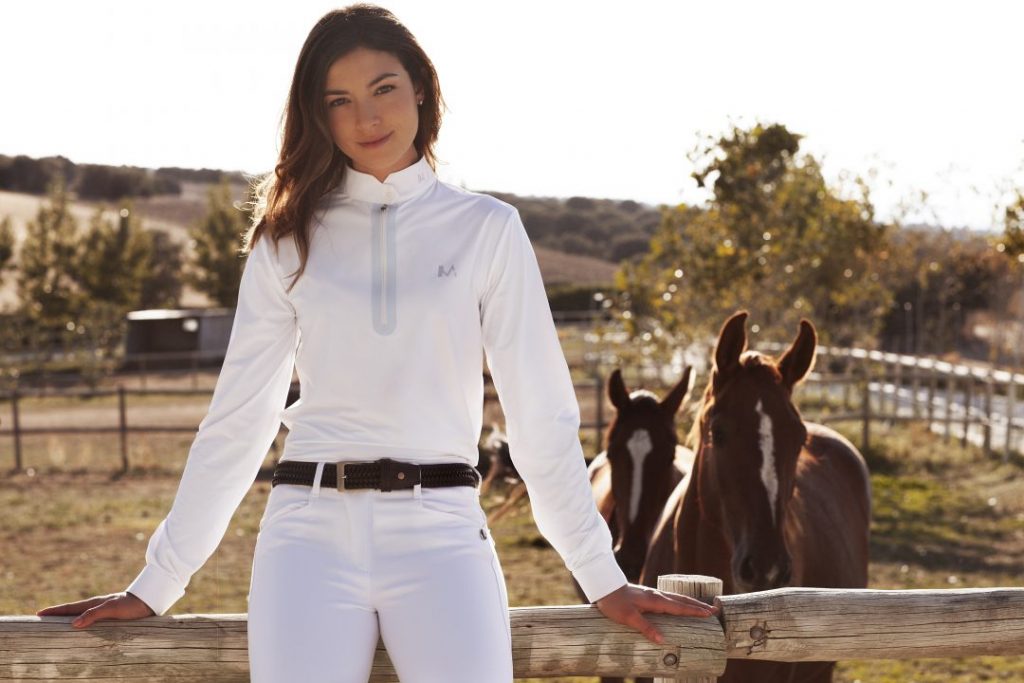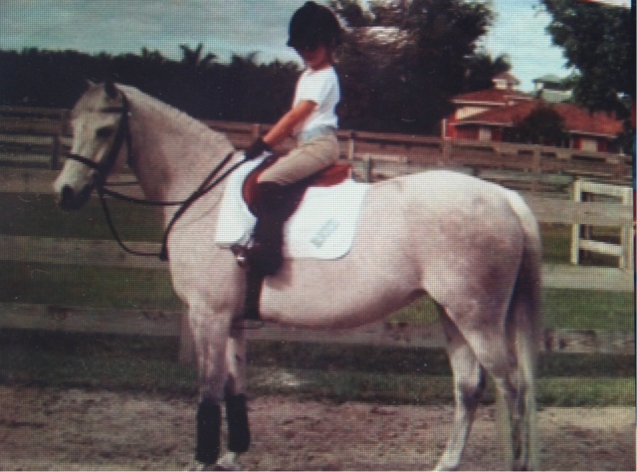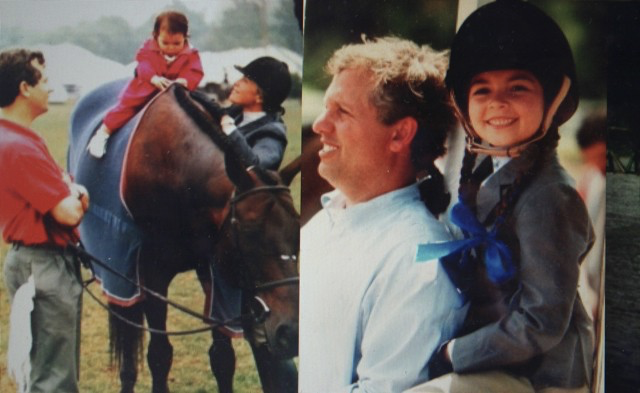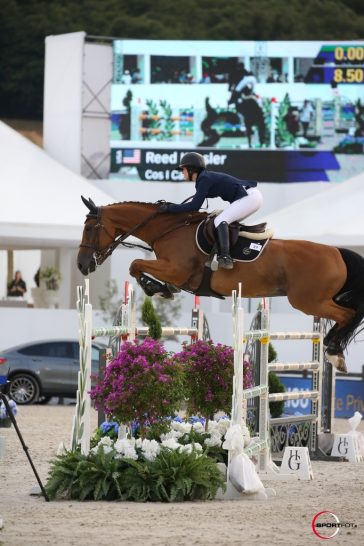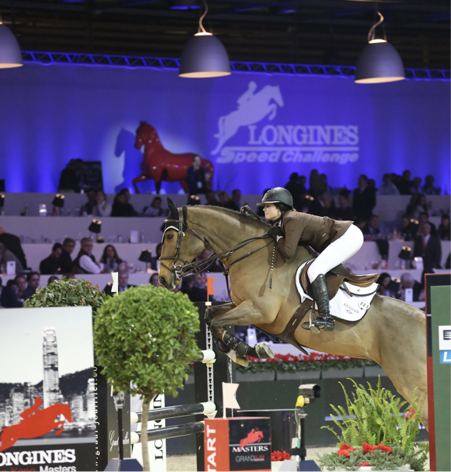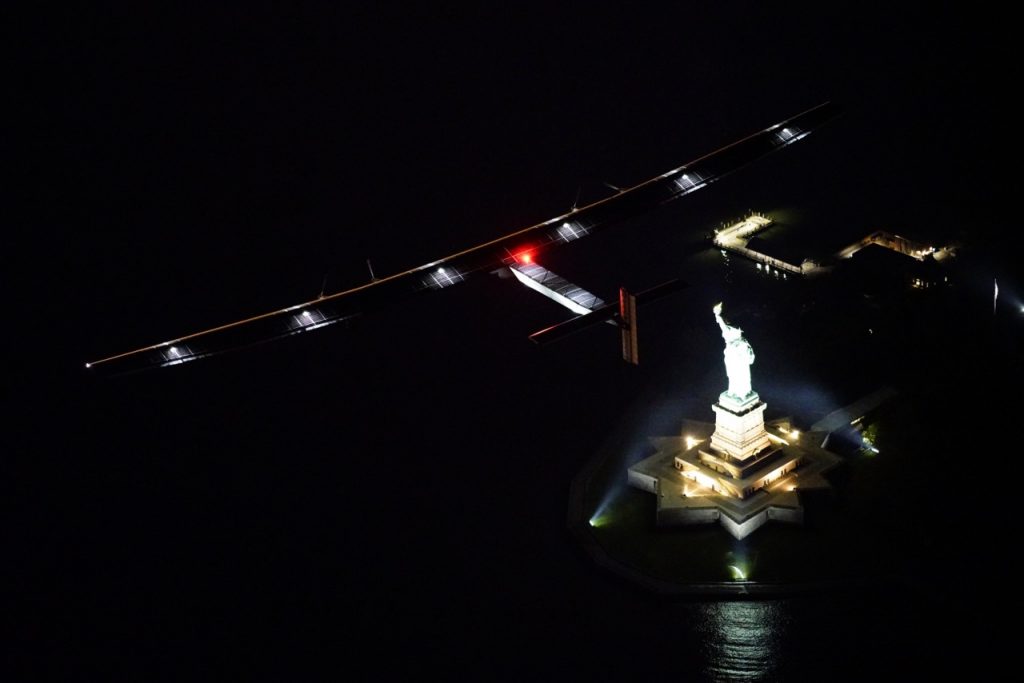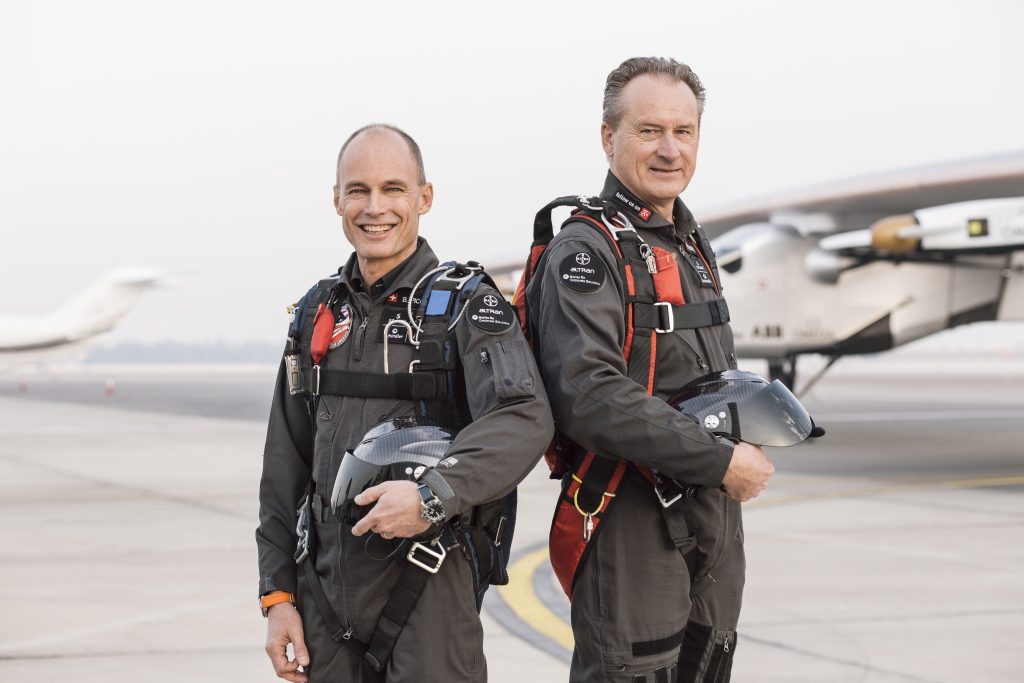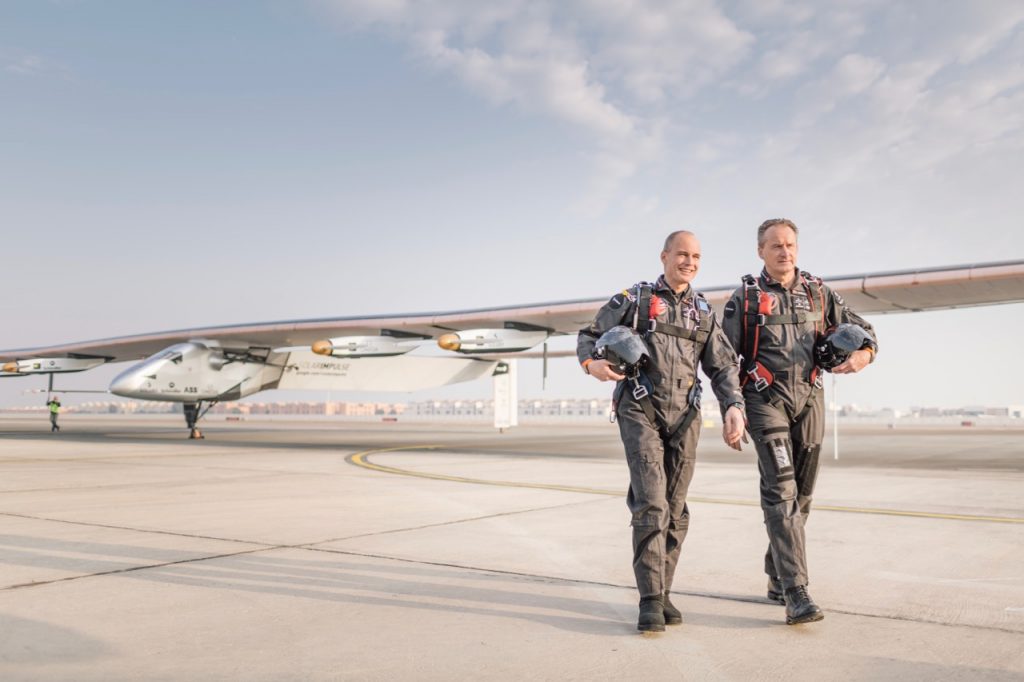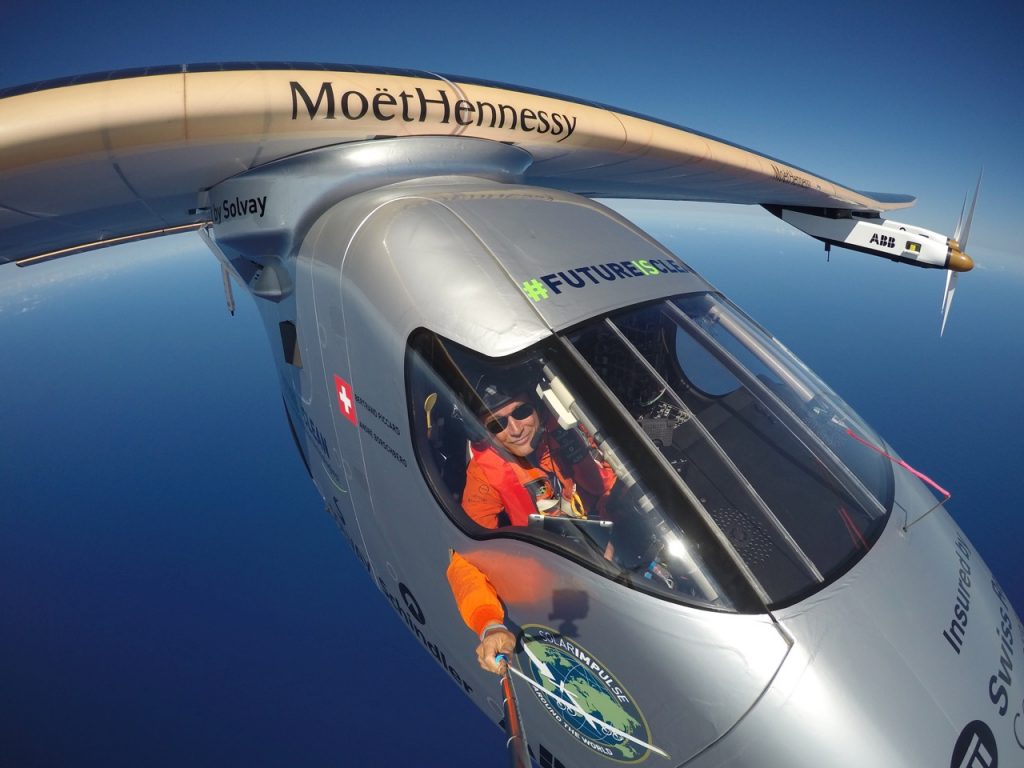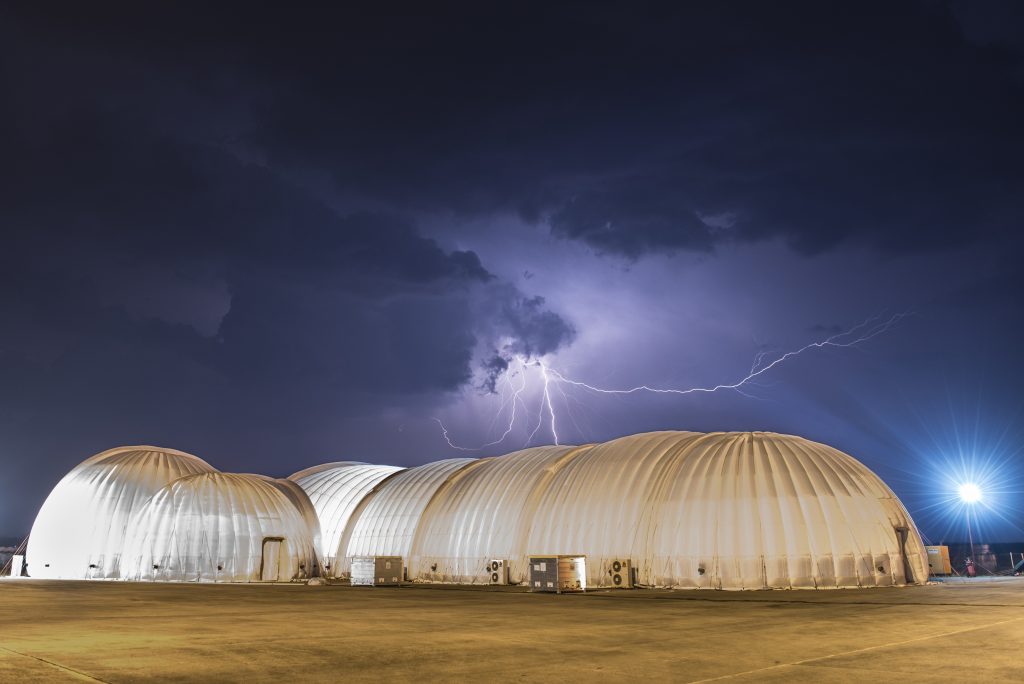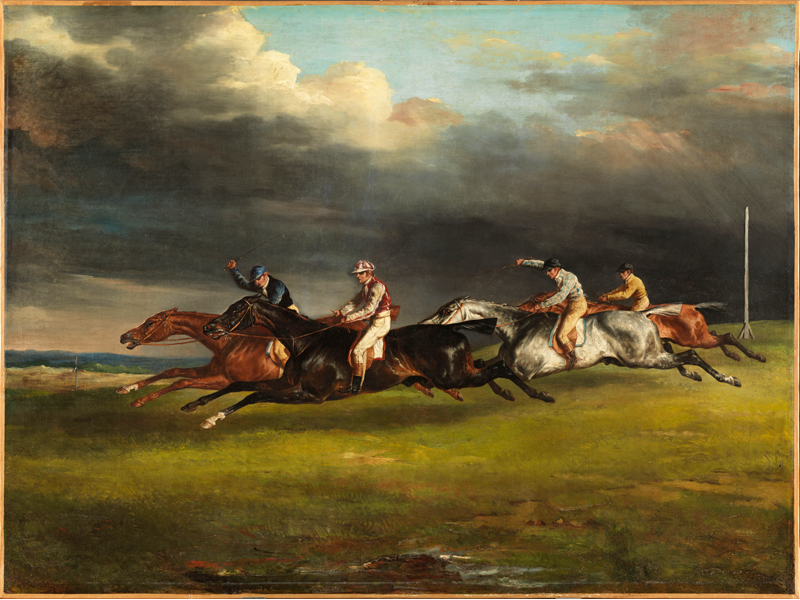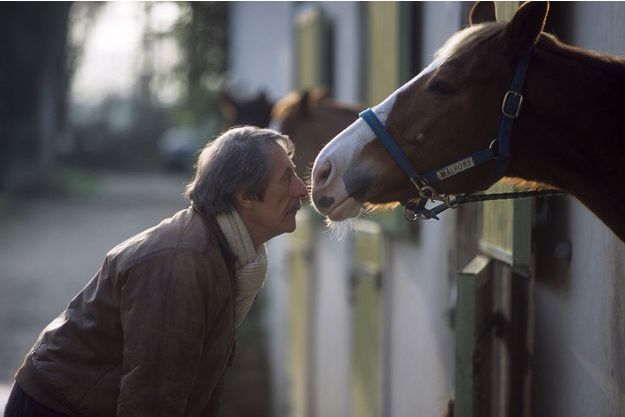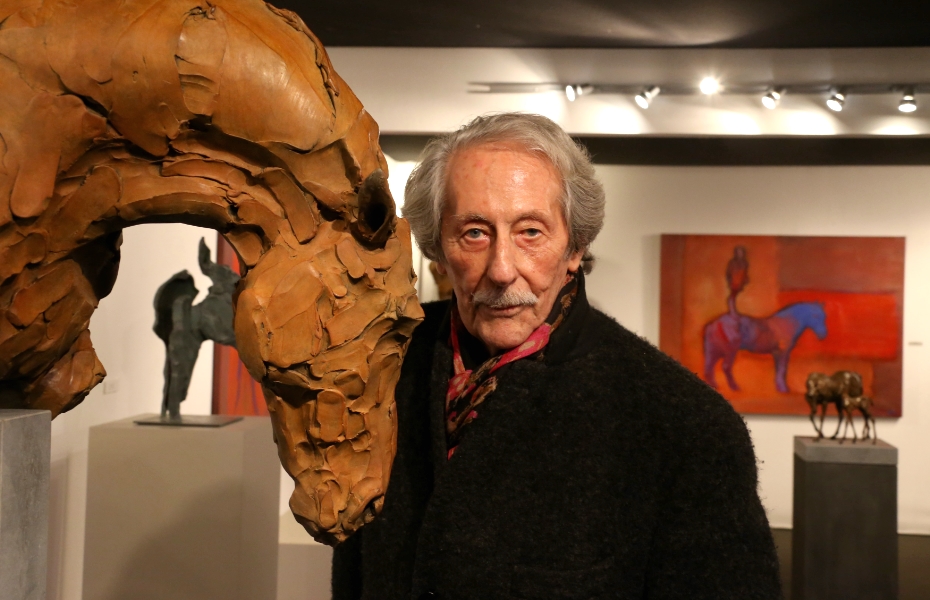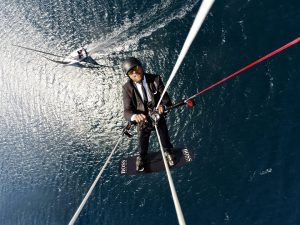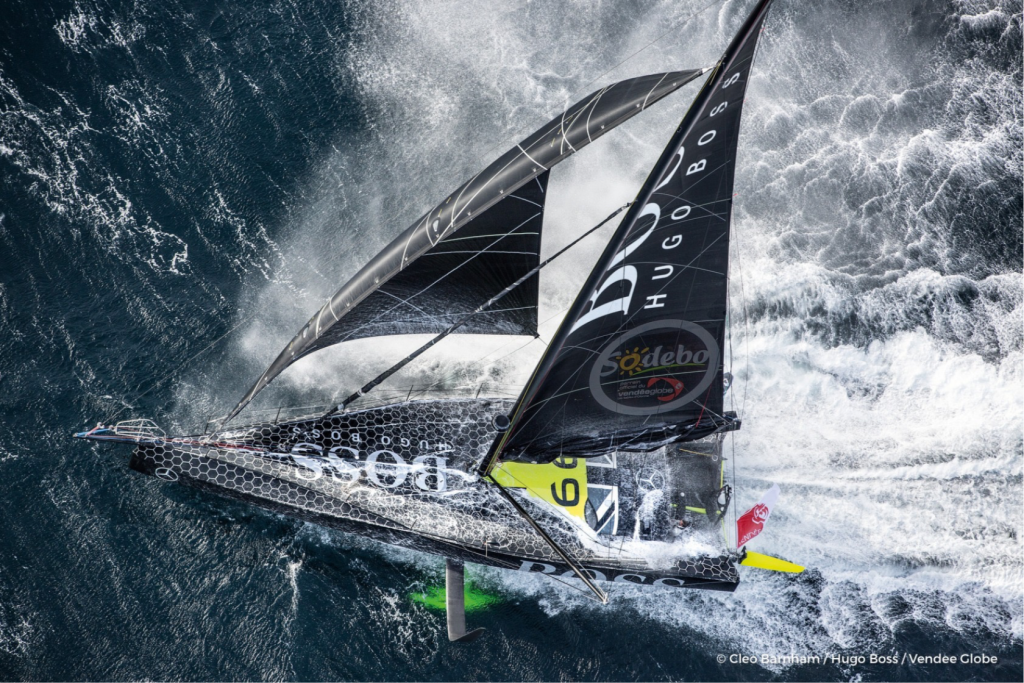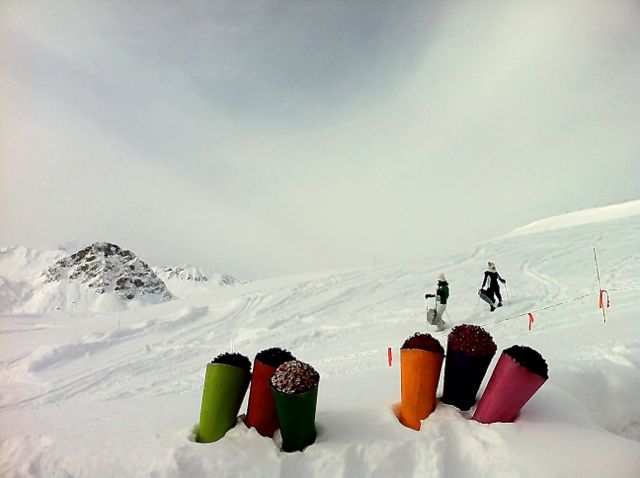King for two months
After the declaration of Independence, Finland elected its first – and last – monarch. His great-grandson is a photographer in Germany.
By Camilla Alfthan
‘Väinö the First’ was the nickname of the prince who in 1918 became Finland’s first monarch – a name inspired by Väinamöinen; the hero of Finland’s epic Kalevala tales. His real name was a little longer – Charles the first, King of Finland and Karelia, count of Åland, Grand Duke of Lapland, Lord of Kalevala and the Nordics. An impressive row of titles for the man elected ruler of Great Finland.
The story, however, turned out differently and the monarchy was abandoned after just two months, before the new king had even set foot on Finnish soil. Though Finland’s short-lived flirt with monarchy is now a colourful interlude in the nation’s turbulent beginnings, the king is not entirely forgotten.
In Helsinki the House of Knights recently opened an exhibition about his two months on the throne. Guest of honour was the German prince Philipp of Hessen who today could have been king of Finland had his great-grandfather remained in this position.
The exhibition displayed the impressive speed with which the Finns began to create their own royal house. Letters of nobility were written and a crown was drawn, while the famous painter, Akseli-Gallén Kallela designed uniforms for the employees of the court.
The Imperial Palace which was built during Finland’s years as an independent Russian duchy, was going to be transformed into a royal castle after a thorough renovation following the devastations of the civil war where the red guards had used it as their headquarters.
An architect and an interior designer of the department store, Stockmann were hired to decorate the king’s private residence – an impressive villa in the Eira district by Gustaf Estlander which had been completed by the famous Finnish architect, Eliel Saarinen. They drew detailed plans and travelled to European cities to buy furniture, mirrors, lamps, silver wear and porcelain. Much was German biedermeier – the height of fashion at the time. Nordic touches were Finnish ryas and Gustavian cupboards.
“The election of the king was a strategic decision as the Finns wanted a monarch as a counterbalance to the Russian dictator. They first asked the German emperor if they could have one of his sons but he declined and suggested his brother-in-law, Friedrich Karl, who was a prince and Landgraff of Hessen, “ tells his 47-year old great-grandson, Philipp of Hessen.
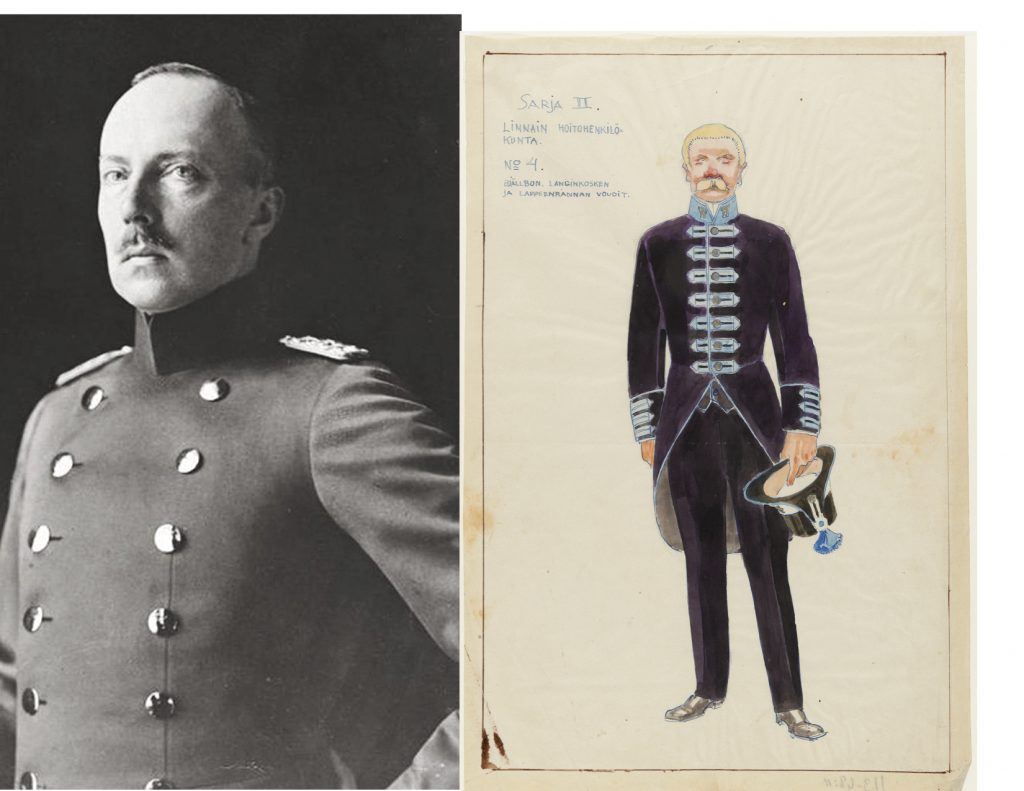 King Charles the First of Finland and his valet. Uniforms for his employees were designed by the famous painter, Akseli Gallén-Kallella. © Museiverket.
King Charles the First of Finland and his valet. Uniforms for his employees were designed by the famous painter, Akseli Gallén-Kallella. © Museiverket.
World War I was raging in most of Europe and a revolution had broken out in Russia. When Finland left the crumbling Czarist regime, the country was suddenly divided in two : The official White Finland which had declared its’ Independence and the Reds who wanted to join the new communist state. During the brief war which followed the Vasa government began to discuss a change in Finland’s constitution.
“The Russian revolution had spread to Finland and the bolsheviks encouraged the social democrats to take up arms. When the Soviets recognized Finland’s Independence on New Year’s eve 1917 it was only because they thought that the social democrats would take power,” tells historian Henrik Meinander.
The Germans became an important ally against the bolsheviks as Finnish soldiers who had been training in Germany – the chasseurs, who came back with their German brothers-in-arms to fight in the civil war. Only 11 days after their arrival at the coastline of Hangö they marched into the capital and declared victory even if the final battles did not end until one month later, on May 15th led by the legendary general Mannerheim.
»The alliance with the Germans helped secure Finland’s independence and the idea was that a monarchy would do the same even if the Finnish law did not quite allow such a change in the constitution. So they chose a form of government from 1772 when Finland was a part of the Swedish monarchy,” tells Meinander.
The Duke of Mecklenburg was among the candidates to the throne. Friedrich Karl of Hessen was a candidate and a sceptic, wishing that the entire Finnish population should support his candidacy. The Danish Prince Axel who was an admiral in the royal navy was also briefly mentioned. The German pressure was strong and the opposition had a hard time being heard, just as the advocates of a Swedish candidate.
“If they must have a king they can take the prince of Wied-Albania who is used to being removed and used to the idea that a bullet is already cast for him. They should understand that a bosch king in the year of 1918 won’t be long-lived,” a Finnish diplomat in Paris wrote ironically.
A Bosch king, a German, was nevertheless elected on October 9th when the Landgraff of Hessen was chosen with a small majority, despite the fact that the social democrats had long fled the country or been imprisoned.
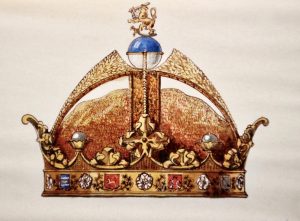
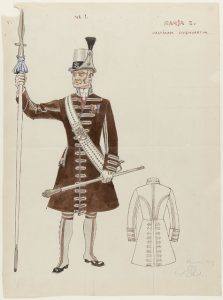
The crown as a sketch. A Finnish jewelry company later made a replica.
The timing, however, could not have been worse. Only a month after Friedrich Karl’s election Germany lost the war and their own imperial rule was abruptly put to an end. None of the Western victors had an interest in recognizing the German king and the course was subsequently changed. The king was no longer going to be invited to Finland, the government had to step down and politics should no longer be based on friendly turns.
On December 14th Friedrich Karl retired after just two months on the throne. General Mannerheim became head of the national assembly and the Finns chose their first president, the lawyer K.J. Ståhlberg. As a republic the country ended up with a modern, an entirely different identity, which was in line with the constitutional changes of 1906 when the nobility lost its power and women the following year could run for parliament as the first in the world.
“When the Norwegian monarchy was born in 1905 it happened under completely different and calmer circumstances, and with help from the Danes. In theory, a Finnish monarchy could have worked as a counterbalance to the revolution. The Russian empire had vanished but the Austrian, German and Osmanian monarchies were still the main governmental form, so the idea wasn’t completely wrong. It is only now that we can see things in a different light,” says Meinander.
When Finland celebrated the centennial of their independence, the king’s great-grandson was not invited “if I should try to take power,” jokes Philipp of Hessen who spent the day in Spain with his wife Laetitia and their three children.
The first time the prince was invited to the cold north by the people who could have been his Finnish subjects, he was 32 and a photographer assistant in New York. The newspaper, Helsingin Sanomat had invited him to the capital in a ‘what-if’ experiment as King Väinö. With photographers following his foot steps the king visited kindergartens, and met with cultural personalities and he was even photographed in front of the czar throne at the National Museum, which is the only existing throne outside of Russia.
“Today monarchy has changed. The royals are representatives for their countries and a continuation of their long histories. They are also fantastic for tourism – like a corporate identity!”
A few years ago prince Philipp moved from New York home to Hamburg where he works with his wife in her online company, Niche Beauté.
“ I grew up in Germany where there’s no longer a monarchy so I’m quite happy with the way things turned out. The Spanish royal house, the Dutch and the Danish – they are all good friends,” tells the prince who has just been to Denmark to visit Prince Joakim. The Greek king is also a relative.
“Somehow we’re all related,” laughs the prince who has photographed some of his blue blooded relatives for the American magazine, Vanity Fair.
The Finnish chapter is one of many flamboyant tales in his family, which includes Sweden’s King Fredrik who ruled in the 1700s and who was also Landgraff of Hessen.
Friedrich Karl’s wife, Princess Margaret of Prussia, a grandchild of England’s Queen Victoria, gave him six children. When the eldest two sons died in the First World War and the following heir to the throne did not have any children Philipp of Hessen would have been next in line.
“Instead he had a crazy life! From being a member of the Nazi party to becoming a prisoner of war and losing his wife in a concentration camp. I was ten when he died so I never got to ask him about his life,” tells the prince about his grandfather and namesake.
The gap between being a monarch and working with images is not as wide as one could think.
“Today monarchy has changed – it is completely different than in the old days. The royals are representatives for their countries and at the same time a continuation of their long histories. They are also fantastic for tourism – like a corporate identity. The Danes have made millions with Queen Margrethe,” tells Philipp of Hessen with a laugh.
When the Finnish monarchy was cancelled, the king’s treasures were sold at the department store, Stockmann. Some of the furniture was bought by the publishing tycoon, Amos Anderson. The would-have-been royal castle, became the presidential palace and the king’s grand villa was sold to Italy who still use the building as their embassy. In Kemi in Lapland where gold washers still find real, Finnish gold a jewelry company has made a copy of the crown which is exhibited as a curiosity. ©
“King for two months” is exhibited at the Museum Milavida in Tammerfors/Tampere from February 9th – October 28th. At the National Museum in Helsinki ‘The story about Finland’ shows the country’s transformation into an independent nation.
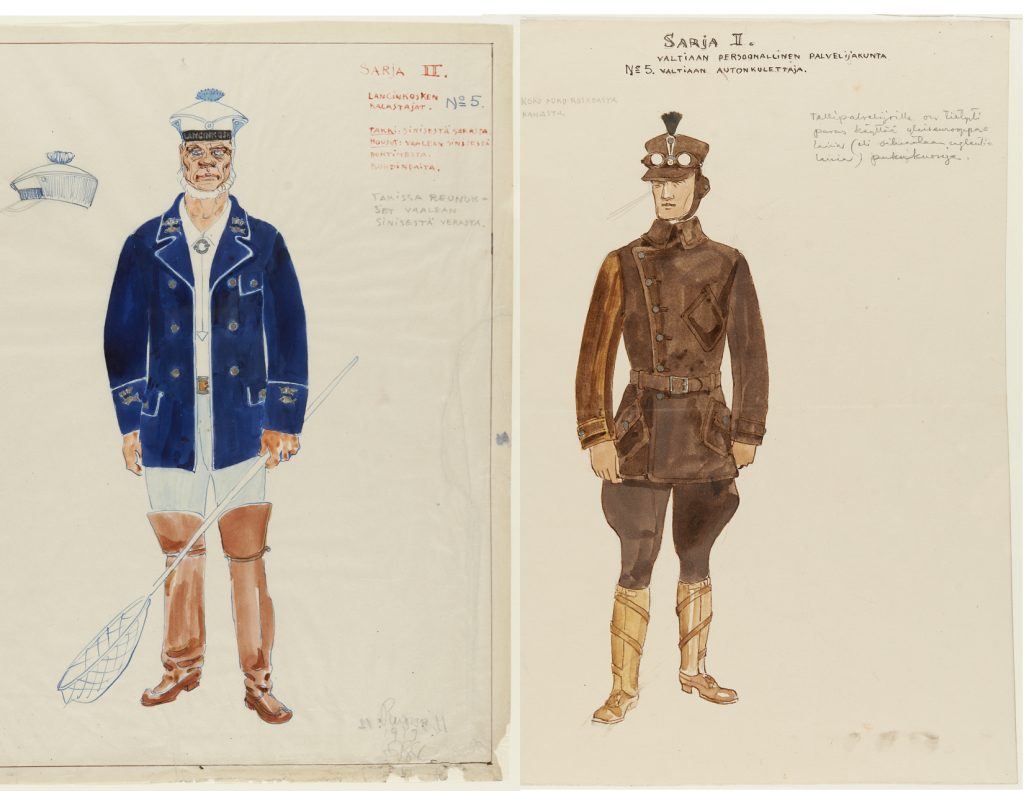
Uniforms for the employees at the court – a fisherman from the former Imperial fishing lodge at Langankoski, Eastern Finland and a driver. © Museiverket
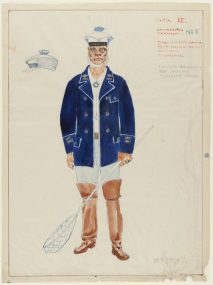
Easy riders
Athletes are always fascinating to interview as they push their limits to achieve their goals. Not least the show jumpers who literally fly over the highest fence.
By Camilla Alfthan
AS A MEMBER of the national, French équipe for over 20 years, Roger-Yves Bost is one of the most popular characters of the show jumping caravan who grew up at Haras du Bruly near the Fontainebleau, where his family has run an equestrian centre for decades.
What singles you out is that you have a style apart.. That’s what’s good; that I’m different from the others.
We all ask the same thing of the horse when we ride, and I acquired a style when I was a child competing on poneys. I had to win and I rode all sorts of poneys, so I tried hard to win. And before that I tried to emulate many different riders. That means that I have a style that is mixed.
And different.. My style depends on the horses. I try to have a large assortment of different techniques that I can change if I need to. The horses are very important, they are the ones who have to jump, so I must not annoy them, I must do my best so the result is the best.
You’re always very concentrated on the course..Yes, I walk the piste for quite a while. I’m concentrating on the objective and each obstacle, one by one, and that makes all the difference. I’m very focused and that’s very important in the ring, to concentrate on each obstacle and not touch the bar. To ride well so the horse will give more. I have a lot of technique. It’s like a pianist who is all alone and who has a lot of experience. My repertoire comes all by itself when it is needed and I can concentrate on the ride and the strides.
“It’s like a pianist who is all alone and who has a lot of experience. My repertoire comes all by itself when it is needed and I can concentrate on the ride and the strides.”
How important is the horse compared to the rider? That is difficult to say. There are highs and lows to an extent that is different from any other sport. If you have a good horse it is easier, perhaps you can say the horse is 70 per cent of the performance and on a bad day it is fifty-fifty.
Who influenced you the most? I had many different trainers, Robert Breul who taught me the basics and Jean d’Orgeix who had a lot of technique and who taught me a lot about the turns, Nick Skelton I watched a lot. My favorite is Nick Skelton with the mind of Ludger Beerbaum. There’s Rodrigo who is also exceptional.
There are so many now. It changes every two to three months and level goes up all the time.
You really have to be motivated as it changes very quickly and the young riders at 25-30 are very strong, they have a physical shape that makes it easier for them. We who are older have the experience but we have to continue to work to stay on the top.
Why this change? There’s more more money in the sport and everything goes faster. People arrive with horses that are better and everything is prepared in a better way. Their training is better, so generally, everything has gone up. On the other hand, if you were good ten-fifteen years ago you can still be a good rider, age is not a problem. ©
Not competitive like most girls are
The daughter of Michael Bloomberg was put into this world to be around animals – and to stand up for them, she tells.
” AS A KID I loved the freedom to get out and get dirty and run around with my friends. Once I started competing I really loved the competition side of it. If I didn’t compete I wouldn’t ride. I don’t do this for fun, I do this because I want to compete,” told Georgina Bloomberg between classes at the EEM Masters in Paris.
You were very young when you started..I was four when I started riding and six when I started competing. My older sister rode a little bit and that’s why I started so early because I wanted to do everything that she did.
What was it about the sport that seduced you? The competition side of it. I think you have to enjoy it to a certain level in order to do it well but for me I loved the competition, and I fell in love with that, and wanted to ride more and more. I’ve always been competitive when it comes to sports. I’m not competitive in the ways most girls are, but for sports I am. I love all sports. To be able to work hard at something and then go in the ring and have a pay off.
“I love all sports. To be able to work hard at something and then go in the ring and have a pay off.”
Are you a bad loser?(Laughs) Honestly, I think in this sport you can’t be a bad loser because you are going to lose so many more classes that you will win. And I think that is one thing that the sport has actually taught me – to become a very gracious winner and loser. I think it is so much harder to be a gracious loser but I’ve gotten a lot of practise in the last few years. I think that you have to appreciate the good days, but really not let the bad days get to you so much.
What is your first memory ? A walk trot class. And I could not get my pony to trot. I was six. I remember being so angry about it. I could only go on from there. I only did hunters when until I was 18. And then I decided that I wanted to start jumpers. It was the challenge of something new, and I thought there was more potential in it. My first major competition was the Young Rider competition – that’s what made me fall in love with show jumping. I wanted to make the US team and come to Europe and show.
How many Grand Prix have you since won? I don’t know. But I’ve kept most of my trophies and I have no shame in displaying them in my home because I’m very proud of them.
You’ve had some really bad falls, and yet you came back. Yeah, the last couple of years I’ve had a lot of injuries and bad luck, horses going lame. The last couple of years have been a bit of a struggle. But I decided to do back surgery which was a very important decision for me – to say that I want to come back stronger and give this sport one more shot. I’ve had a lot of bad falls, but you know; it’s something I’ve never been scared of, and I always wanted to come back.
That’s what’s interesting about horse riding – you always get back in the saddle. Yes. It doesn’t always make a lot of sense. But we do. It’s a risk that we know is there when we get on a horse. If you start getting scared then it is time to do something else. But I never let it get to me too much. I’m not done in this sport yet and I want to give it another shot. It’s gonna take more than a few broken bones to keep me out of it.
“It’s gonna take more than a few broken bones to keep me out of this sport.”
You’re father always supported you. We’re always very supportive of each other though we do different things. He’s obviously not a horse show person and he doesn’t quite understand the sport. Hopefully, if we bring the show to New York he’ll come and see it at this level, which I think he hasn’t before.
It could also be great for the city. I’d love to get people who usually don’t get a chance to see show jumping to see our sport so they’ll understand it is not an elitist sport. It is a real sport. It’s gonna get us a lot of exposure, and show people how hard we work and how exiting this sport can be. You make a lot of sacrifices. You’re around six days a week and it is very time consuming when you travel a lot.
You ride mostly in the States. Yes, but before that I went to Germany in the summers and that was a great expercience. I enjoy riding in Europe, even if it is a small show, to see how well run they are, and also to be able to ride against people who’m I’ve admired.
Do you have a favourite? I think Marcus Ehning is an amazing rider, I love his style, and he’s a great fighter. He’s very quiet on the horse and let’s it jump. You don’t notice his body or hand, he’s very elegant. I have to be a little careful with the horses I choose. I have to be able to get along with them, and they can’t weigh a ton, because I’m on the smaller side. I go to the gym so that I can be as strong as possible.
So bonding is also a part of it? Yes, I get very attached and I form a relationship with them. And I always think I don’t have a lot of natural talent. I have to work very hard at it. So for me, I really have to forge a relation with the horses. Then, unfortunately, you get attached and if you’re supposed to sell a horse it is hard. I always have troubles letting go.
Does it happen a lot? Yes, we have to sell a little bit in this business and I have to make some sort of money so we’ve sold a few. But some that I should have sold I did not.
You’ve said you’d never spend a fortune on a horse. I like buying horses and do all the work myself. A lot of people think, ‘You can afford to go out and buy an expensive horse, why don’t you?’ For me, morally, I’d never want to do that. Just because you can afford something it doesn’t mean you have to go out and buy it. I want to work my way to the top in this sport, and not buy it. I’m also doing a lot charity work to know what that kind of money could do for something else. So I can’t ever justify spending that on a horse.
“Just because you can afford something it doesn’t mean you have to go out and buy it.”
Your father’s position (in politics) also makes it difficult. Exactly. And just for myself I morally can’t do it. And if that will keep me from the top of the sport; so be it. I’d rather feel good about myself as a person than reaching the top as a rider.
You also love dogs..I have five rescue dogs and I also just rescued a pig. (Laughs) He’s very smart, and he’s house clean. He was at a compound in New Jersey and needed a home so I adopted him last week.
Tell me about the books that you wrote. There’s a little bit of me in every one of them. The Tommy character most people find is me, and I’m honoured because she is the most down to earth, hard working and kindest person. But it is about a general experience of things that have happened to me or friends.
What were your reasons for writing them? When I was approached about this, I first said no, because I never really enjoyed writing. But when I thought about it, I realised it was the first time I’d have the opportunity to write about something I know so well and love. And when you’re doing something that you love it’s actually fun. I did it with a co writer, and the first book was the hardest. But then we came up with the characters, and after that, it all came very naturally. I knew where they’d go from there and what would happen to them. Every book gets easier and easier. We’re in talks about making a television series. There’s a little bit of romance, and a little bit of everything. It’s about teenagers in the horse show world and the things and the drama that happens there…The horses have given me so much, so it is my duty to stand up for them. I work for the USPCA, doing a lot about horse slaughter.
Which is a big problem. Most people don’t even know that it is a problem. People don’t assume that it exists. They’re taken to abattoirs Canada and Mexico. We treat these horses so well and people don’t always see the other side. Even these horses here can end up in slaughter. So it is our duty to follow a horse once you sell it to keep up with where it is going, and who is going to get their hands on it. For me, the work I do with animals is the only thing I know I’ll do for the rest of my life. It’s my biggest passion. I know the reason I was put on this earth is to do this. ” ©
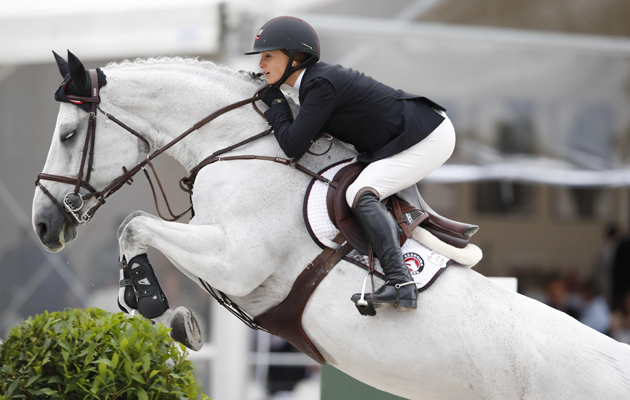
Georgina Bloomberg on her favourite mare, Juvina. “In competitions, there’s no space for bad losers. Because you always lose more classes than you win,”she says.
Ludger’s Many Likes
IT IS the horses who helped the German super star, Ludger Beerbaum secure his numerous trophies – three Olympic team gold medals (1988, 1996 and 2000) an individual Olympic gold from Barcelona in 1992 and two team gold medals from the World Equestrian Games to name just a few.
You say you don’t have a favorite horse – but which are in the top ranking? Ratina, Classic Touch, Gold Fever…..these are for sure my peaks. But then I also had Priamos, who was a really nice horse that I only had for two and a half years. Even a horse that was a bit a second rate; Figaro’s Boy, was nice and competitive. I don’t know how many horses I’ve had during the years. 250-300 when it’s just the ones I’ve been on to international competitions.
I’ve been lucky to have many good ones. If I just see all the horses I won championship medals with, even Glady’s, Champion de Lys, they were all very different. If a horse has courage and character, and it’s competitive you can live with different types of horses and blood. In the end; if they have a good heart and a good will, then that’s what is important.
Which is more important, your horses or your family? The family is number one, the horse is always second.
“I’m also not in love with my horses. I like them. Some people say, I love, I love, I love….but it is not the German way of interpreting feelings.”
I’m also not in love with my horses. I like them. Some people say, I love, I love, I love….but it is not the German way of interpreting feelings. I really like my horses and I’m a lucky guy to find a way and a job in this sport. But love and families are a little bit different.
Your family and the horses are nevertheless inseparable. My family is a part of the game. We live in the yard, so they are pretty much involved. But the travelling is not easy. I can’t go to all the shows. You have to have priorities and make compromises. The show is a vagabond life. In the end it is the family first, and the horses are a job.
Would you want your children to follow your path? I’m not sure, to be honest, if I want my kids to follow my path. Especially for the girls. It’s a hard life. If they really want to do it I wouldn’t say no. But I would definitely never push them.
How did you get into this sport in the first place? I was always really keen and I loved to go to competitions. When you’re young and you realize that you are becoming successful it’s like a drug; you like what you’re doing. And then once it came to a point where I had to decide whether I wanted to stay as an amateur, so I decided to try riding professionally for a few years. And that was it.
For how long will you go on? I won’t stay in this business forever, like some of these guys who are in their sixties. Because I’d really like to do something else at some point. It will always be something with horses but not riding every week because it gets kind of boring. I have some riders working for me already. I’d like to do a little bit of farming. I have some land in East Germany. I’d like to do some more there. I could do this for another 10-15 years and then it’s time to change. ©
Judy Ann & Christian
“We share our horses. Judy is riding a horse for me at this show. I have Taloubet which was her horse before. I have to find out with which rider he has the best results…When you ride in the same class, you walk the course, and you have your way of thinking, you talk about it and try to make a good plan for both of us. If you’re alone it is much more difficult.” Photo C. Alfthan
FOR SHOW jumping’s power couple, Judy Ann Melchior and Christian Ahlmann, the horses are everything. Just as being able to compete in the same shows.
You’re surrounded with some of the world’s best horses. But which horse is your favorite ? Christian Ahlmann: The best horse is the one that does best in the competitions. But the best horse for me is Costa, because he brought me up and he was my first successful horse. I rose to an international level thanks to him and he made me a European champion. I’m really thankful for what he did for me and for my whole career. That is why he is my favorite. For the moment I have Taloubet. He is amazing and perhaps even better but Costa will remain my favorite horse for the rest of my life. Today, he’s on the fields at home with the ponies.
Judy Ann Melchior: My favorite horse is Levisto. I had him now for 15 years so he’s going towards retirement. I think I have one more year with him. I’ve had other succesful horses but for me he’s really a big friend. He’s easy to ride, he fits well in my system and he’s mentally a fighter; so for me he’s really everything.
How long have you been a couple ? Christian: We’re now together for five years. We know each other from the shows. I’m ten years older. So we were not always on the same ones. Now we are a family. Our boy was born in August. It was a big step to have a child. Now we have a life together. Generally, I think it’s really important that your partner has something to do with the business or with horses; otherwise its going to be pretty difficult in the end.
Judy Ann: We’re lucky that we can often ride at the same shows and that we can travel as a family together to do the same stuff.
How did you deal with your pregnancy ? Judy Ann: I stopped riding immediately because I did not want to take the risk. And I started immediately afterwards. We have a maternity nanny who follows us around. In the daytime, she is at the shows with us and in the evening she goes to our hotel.
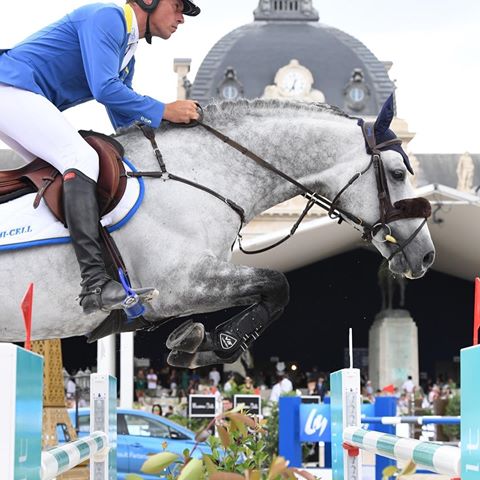
Christian and Clintrexo Z, photo LGCT
Has it affected the way you ride? Are you more careful ? Christian: I think it is the same. Maybe for Judy it is harder to come back. But in the end you dont think about your children when you are in the ring. You take the same risks and the same horses as before. For me it is for sure like that. And for Judy I think it is the same.
“In the end you don’t think about your children when you are in the ring. You take the same risks and the same horses as before.”
Judy Ann : We don’t ride because we think it is dangerous. For us it is something natural. But I did stop for nine months which interrupted the show rythm. After one month I was doing shows again and I’ve been quite successful. Maybe not competing for the first place but I’ve been placed well in the big classes. But you do loose a lot of rythm in nine months. So it is something you have to build up again. It’s only natural. For every job you have to rebuild after such a break.
Christian: For horses and riders it is the same. If you’re out for a while you’re not a hundred percent on. It takes time to get back.
Will you have another one ? Judy Ann: We’ll have a bigger family but right now it is perfect to just be the three of us. The bigger your family gets the more difficult it gets.
Do you ever fight over your results? Christian : We compete against each other all the time. It doesn’t make us fight, for sure not. I think it is the only sport where women and men compete together.
Judy Ann: When we’re both at the shows you have much more chance that at least one of us was good. So when Christian was riding alone for nine months his results were terrible. But when we’re together there’s alsways more chance that one will win.
“The sport has changed a lot in the past few years. Normally, our base is Belgium or Germany, and we travelled around shows in that area. Now we go to Brazil, to America, to Asia…it is a big difference from a few years ago.”
Christian : We share our horses. Judy is riding a horse for me at this show. I have Taloubet which was her horse before. I have to find out with which rider he has the best results. Sometimes with her, sometimes with me. It’s not really clear from the beginning. Judy has a different way of riding. I ride with much more pressure and my body has much more weight. For some horses it is good, for some horses it’s less good. When you ride in the same class, you walk the course, and you have your way of thinking, you talk about it and try to make a good plan for both of us. If you’re alone it is much more difficult to do it.
Judy Ann : We always talk about the sport and we always train our horses together and the whole logistic side is one. We both know each others situation really well and we know each others horses. Christian has been teaching me.
Christian : I train her more than she trains me but it doesn’t mean that we don’t always talk about it; she asks me and I ask her, it goes both ways. It is really good for both of us.
What do you think about the boys against girls class that was created for this show? Does it help popularize the sport? Christian : It really makes it clear for everybody that we have a sport where it is boys against girls all the time. This is something really special in our sport. We have the same classes and the same competitions.
Judy Ann : For the riders that particular class does not make any difference. But for the audience it is fun. They were very successful at making an elegant show. They have created a lot of interest in the public. It’s a good place for Gucci to come out with its image.
Christian : The sport has changed a lot in the past few years. Normally, our base is Belgium or Germany, and we travelled around shows in that area. Now we go to Brazil, to America, to Asia…it is a big difference from a few years ago. I think the horses can handle the trip really well, they don’t need two-three days to be back to normal. If they don’t know what it is it can be really difficult. If you have a 7-8 year old who tries it for the first time they can get travel illness – you have to be really careful. The Grand Prix horses have a certain age, they know the circuit and they can handle it well. ©
Interviews at the EEM Masters, Paris
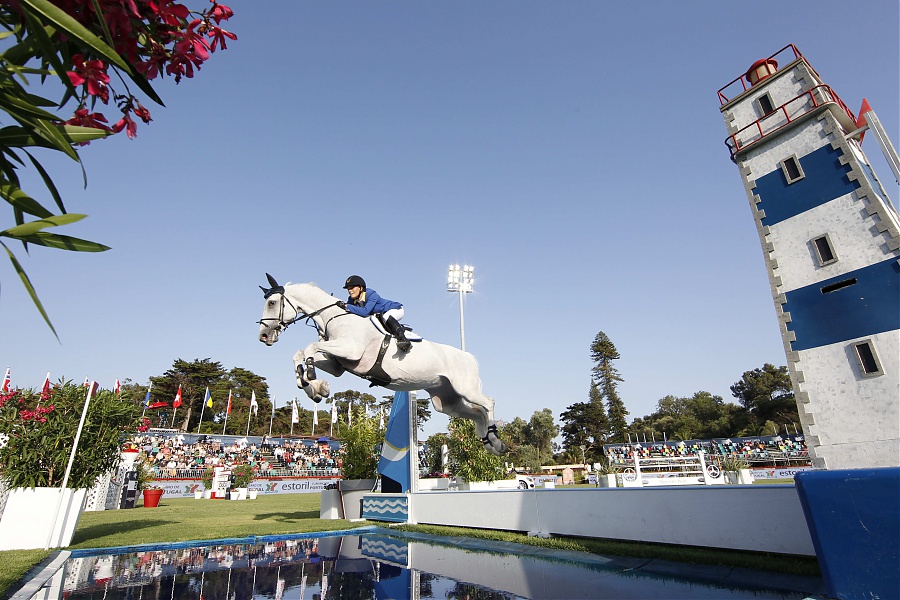 Judy Ann aboard Clintrexo Z, photo Stefano Grasso
Judy Ann aboard Clintrexo Z, photo Stefano Grasso
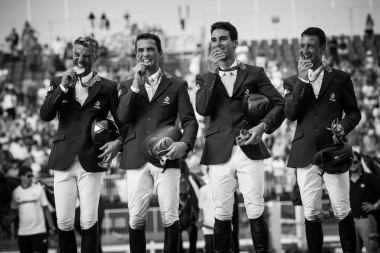
Closing in
When the London based photographer, Tim Flach, came out with his lavish tome, ‘Equus’, he was compared to some of the greatest equine painters of our times. Modest and unassuming, horses are just a chapter in Flach’s career, though they were always a part of his life.
By Camilla Alfthan
”BOTH MY PARENTS were passionate about horses. My father played polo, just as my brother, and my mother used to hunt. It was very much part of my growing up,” tells Tim Flach during our conversation about horses and photography. Famous for his arresting images of animals Flach’s studio is far from the Noah’s Ark that one might expect. He only has two cats and he never really went riding.
“I was just a child trying to do things told by my step mother, mucking out and cleaning the stables, strewing them the hay; that physical kind of connection. I was that kind of generation where the kids weren’t given too much opportunity, I was just there to help out. I wasn’t given riding lessons or any of that sort but I always enjoyed being around the horses. I think they are very sensitive to the energy around them and I think that I’m fairly quiet and fairly neutral and I have great respect for them.
The people we rented our house from had a large library with images. The lady there was a world renowned botanist, so seeing all these wonderful creatures and the combination of being on an estate that had a lot of forest all affected the outcome of what I did.”
A race horse at track work before sun rise.
HORSES IN HISTORY
”One thing about photographing horses like the halter horses and the wild horses that I did so many of in Mongolia, is that it’s not necessary to ride them to be observant of them. There’s a difference between riding the horse as a pleasure horse and the history of the horse which is a lot less sympathetic to the animals’ interest.
We think of pleasure horses as extensions of pets. But they were used in situations where people would wear a horse down as they do a car today. So the sentiment we have today is hugely different than a generation back. Horses are so deeply rooted in our culture with the the paleolithic case of Portugal and Spain. If we look to art so much is related to the equine subject because they were hunting the horse for food but they also knew the anatomy of the horse better than we do because they were dismantling it and using every part. Then equitation came about from the Corinthians to the Athenians..
If you’re interested in culture you cannot separate the horse and us. It’s such a deep heritage, so rooted in our history.
Today you don’t see it so much in modern art and that’s a huge change. And yet our language is still peppered with equestrian references whether we’re talking about horse power, or whatever; we’re constantly using words that are linked to the equestrian universe. We almost forget it as it is such an important part of our language.”
The horses of the vikings still roam freely in Iceland.
AUTHENTICITY
”Today, we’ve got more understanding of animals than ever before. We can watch rhinos at night, a hunting sequence of wild dogs until the final kill from some micro light. We know animals better than we virtually ever have before. But, in actuality, we have never been more separated.
We know animals better than we virtually ever have before. But, in actuality, we have never been more separated.
It’s a a conumdrum that may come to haunt us because as we separate ourselves from the horses in our mechanistic lifestyles who knows what it sets up? And because it is all happening so fast we can’t know the consequences of it.
My seven-year old son going to the i-pad and not integrating socially as much as previous generations would have done to go off and play football…We don’t know the consequences of this.
In that sense, the role of the horse is not much different than before. Racing hasn’t changed much. It’s about pleasure that changes the dynamics. There’s the whole thing about the health benefits of owning a dog, or having that sense of freedom that a horse might offer.
There’s a general shift in our understanding of animals in our space.
We’re going through these changes that are unique to our generations. I don’t want to sound moralistic but certainly there are many challenges out there.”
From Tim Flach’s latest book ‘Endangered’.
EQUUS
”When I made my Equus book I decided I’d rather look at the horse than the culture around it, the people elements which are a totally different matter. Though the different breeds of the horse have become cultures in the sense that we shaped them.
We were quite responsible for why we’ve got a chihuahua and a Great Dane and like we speak of genetics, we do shape the form of the horse according to the functions we need them for.
Those who did not suit us like the Przewalskis were pushed away to the Gobi desert. Even the wild mustangs are managed in some way. When they capture them they will release stallions that they want to breed and cull others that are less commercially of interest. When I went to the round ups they put back stallions with nice colour marks.
The dish of the Egyptian halter has become more exaggerated. In the Haflinger story, I went to were the best breeding place. They were quite dark over a hundred years ago and now theyre quite pale because they’re breeding them for aestetics rather than for function. They are still very effective for the mountains, but more to take a tourist up to the mountain than work for a farmer. So my images show how the horse was desired in 2007. In another 50 years it may have moved on again.
I felt the horse was so deeply rooted in our country that I wanted to explore it. Once you start such a journey you trip over things that are interesting. So the question was who would represent the different types of horses and their roles. As a progenitive to a lot of breeds was the Arabs, so I’d start there, and that gave me a lot of opportunities but I also wanted a general overview and represent certain areas.
I was playing it by inquiery of what people would tell me and some of it was led by an overview.
I tried to cover all the areas that I thought would represent the Arabian horse. I wanted to go back to where the horse came from, rather than photograph it in Poland or Sweden, though, ironically, the bloodlines have come back recently from Europe. The way the horse was formed by the desert, its hooves..I wanted to show that and it felt right. I wouldn’t photograph a poor Shetland pony in a hot climate where they have all sorts of challenges given their double coats.”
FRAGMENTS OF TIME
”One of the roles of photography should be to extend the experiences around the subject matter. That could be several different respects. It could just be geographical. Who would go to Shetland to see the pony, or who would go to Norway and see a fjord horse? So that is one thing; to show evidence of the landscape that molded the shape of those breeds.
The other thing is sometimes to show details that you couldn’t normally observe – catch a movement to suspend a moment in time. It might be looking at a horse shaking and the way the hair moves. It could be a horse jump – or in the case of the Arab going down the track, you can observe the way the bit is in the mouth. Certain details because it is captured.
But it is also the idea of the stylization. I’m not trying to compete with event photography but to shift the experience which, ironically, because it is shifting away from the familiar, engages you.
So photography’s role should be to engage the viewer by fragmenting a moment of the time or simply the detail that can be brought through.”
Dogs followed Flach’s equestrian tome.
GOING OUT AND SHOOTING IT
”I normally pick my subjects and I may have four days to do them, and then I distill it down to a few images so it explains something. So if I go away to India to do the Marwari horse, I want to show its ears and a few other details that explain the uniqueness of that breed. So whether I go to Rajasthan or just outside London I have to limit it in practical terms.
I probably shoot two or three pictures a day that I end up using. Sometimes six pictures a day or just one.
I can’t afford the luxury to not use them at all. There might be occasions where I’d like to go back and revisit to take it further but not often. It’s not like I shoot thousands of pictures and only select a few, I kind of home in on what I want to do.
My advertising background may have influenced me in the sense that I need to come back with something. The fact that I use flash means I can overcome some of the elements that may have stopped me. I could have a grey day and a rather dull white sky and I could light it to make it a moody sky, so I did use my technical skills to make things go somewhere. Surprisingly the horses don’t react much to the flash. I’m more concerned about flapping or something behind them that they cannot see.
In Mongolia it was just myself and a guide. In the fjords I went alone. I’d been there in the winter, picked my routes because it would be difficult to get around. In Iceland we went with Animal Planet and we had to cover quite a lot of ground without any production, so I took quite a few people out there. Usually I’ll go with one assistant on most of the jobs. But then when we went to a place like the Emirates a lot of people voluntered to try and corral the horses so you end up with a dozen people for the day who help out, who are linked to the yard or friends of friends.”
Rearing in the desert.
CREATING YOUR OWN EXPERIENCES
”Favorite photographs and favorite times don’t usually link. I remember being with one of the cousins of the maharadja in this crumbled down palace having tea. In Iceland looking at the midnight, photographing horses through icebergs. The cowboys in the Rocky’s having breakfast. Walking 50 miles a day in the Hustai National Park chasing the Przewalski horses because there were no roads. I have different memories not always related so much to the actual pictures.
I think you have to be up for the adventure because that’s part of it all. To create your own experiences that you want to have and allow the opportunity to find new things, really. I so enjoyed meeting the people. Once you start aquiring the understanding it’s great sharing that passion and interest with the people that are passionate about what they do. I always found that electric – being around people who have a passion about something in their life. I always found that so exiting and rewarding.
I found myself talking and having a great time with some sheikh who had to go off to rule some other country in the afternoon; or talking to someone about a trotter, it’s just quite surreal, because it gives you an entry to so many different people that you wouldn’t otherwise have a reason to meet.
I love that chance to be able to meet and have a common ground with people from all over the world and to share something. I was accepted because I shared their passion.”
PEOPLE’S PERCEPTIONS
”Instead of differences I found communalities, they all felt their horse was the oldest and purest. Everyone wanted in a sense to claim their right to a uniquess of their breed. They were so proud of it and of the exponents of their virtues.
When I work with people I like to hear their thoughts about the pictures I take as it is from there that I start to learn things.
I’ll ask someone; ’Tell me what it is that you look for in your Arabian show horse’ and he’ll say; ’I want to see a kind eye, I want to see a muzzle that will fit in the palm of my hands. I want to see the crested neck.’
I ask the question rather than assuming because I dont have much knowledge. So it’s great to hear it from those people who were passionate.
What they desire and what it is that is special to them. If I’ve got to touch other people I’ve got to be interested in what is it that others will ressonate with when they look at those pictures.”
INTIMACY AND UNUSUAL ANGLES
”As an owner of a dog or a cat you have that proximity, you’re much closer. That intimacy – I hope my abstracts create that ambiguity, that they leave a space as well.
In my book, I tried to show the horse in it’s environment, and also, I didn’t show any tack because I wanted to show the horse without making too much reference back to humans.
The horses that wore masks and helmets after anesthesia were more about showing a history and an investment in the horse. The utilizing of the horse, war fare. They’re also ambiguous. I like the fact that you don’t know what it is, the head protector – it looks like he’s going into a boxing ring.”
DEBATES AND WONDERMENT
”There’s definitely a migration of words to images.
Ironically, we started with images from our experiences, and then word became the abstract symbol to interpret it, and now we’re not of the sensuous side of it anymore, we’re going back to images as a kind of idiom that suits the communication age.
Some territories are breaking down where language might get in the way. Though context sometimes is lost and words are needed.
In my early images there was a neck of a horse which was like a mountain. That resonates with me today. I recently had a series published by Stern, and I reworked an image with the knowledge I have now. My skills have moved on since I did Equus. I’m much more able to manage images in different ways so my images are much improving because of that. I feel like I’ve moved along quite a long way since then. I could reinterpret anything I shot.
The photo of the horse in the window in the stable still works for me. The embryo series still are among the images I find interesting. I think when you see it you know the potential. You don’t know until you find it.
The questions is what we do with our continuous isolation from place and nature, and what that sets out in the future.
Pictures are interesting when they bring up different debates. One thing is the wonderment of the horse, and the fact that embryos follow certain patterns similar to other species. So day 35, the embryo almost looks like a human baby. At another level, it points towards the management of the horses, particularily in Arabians or polo ponies, the fact that most commonly transferable single embryos are horses or humans.
It brought up economic debate as well as ethic and the wonderment of the horse. When you get to that they become more interesting. I think my interest has moved in the years since I was doing Equus.
What I find interesting is those debates about how we manage animals. The perceptual questions about what they understand about us.
The questions is what we do with our continuous isolation from place and nature, and what that sets out in the future. The relationship we have with animals is continuous and something you cant just change in a few generations. The being around animals.
But we are definitely visiting a new period which is very unusual in our history, where populations are huge and we’re reaping our planet on a scale never seen before.
As humans we’re always a derivative of what we take. We can look at nature wishfully and be inspired by it.
Wonderment is very important. I’d like to make images where I catch a meaning with it for a museum where it can be considered. Voices to bear on people out there who are more knowledgeable about this than I am.”
HORSES AND HERITAGE
”Every country has a horse that is very symbolic of their country. And people are passionate about preserving it as something that represents their heritage, whether it is agricultural or something else.
My interest and structure has become more and more inspired by painters and my compositions have changed quite a lot.
It’s quite an honour to be compared to Stubbs, I appreciate his commitment. He spent a lifetime making his works. But it is nice to know that I’m part of continuing this culture of imagery around horses.
I think I tend to look broadly at this culture. The horse in the window with the chestnut coat – I was very much conscious of George Stubb’s Whistlejacket that was an influential painting.
Initially, I wanted to go out in the open where you have the falcon and the camel, the saluki and that whole historical link, to look at that heritage, but because of some events where the horses were moved around in the royal yards, they didn’t have them.
If I’d done what I wanted to do I could have gone on a few more years. I feel I only touched on it. Equus represented a period of two years when I was doing others things, and there were some images that went back some years. I’d love to have spent more time and done something more serious.” ©
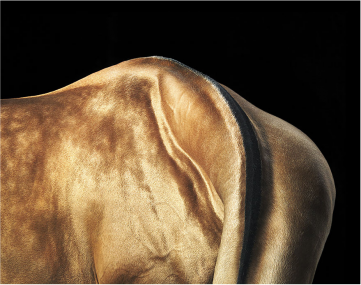
Raising the bar
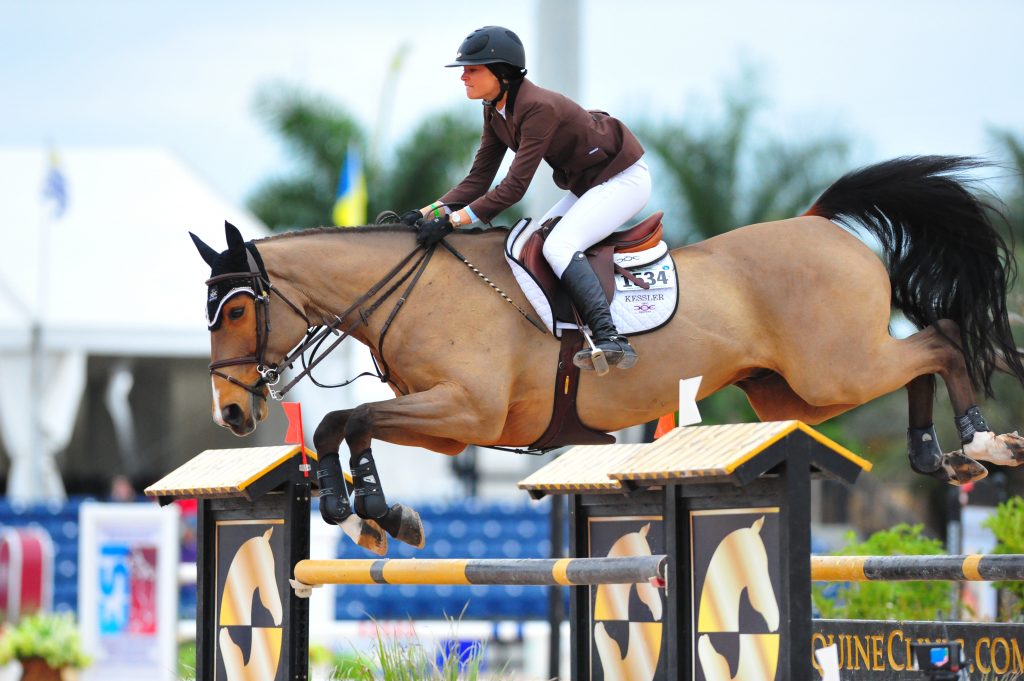 At only 17, Reed Kessler was selected to compete at the Olympics as the youngest rider ever. She’s since been no. 1 in the US and she’s run her own competition stables in the Netherlands. At 24, she’s back to school again.
At only 17, Reed Kessler was selected to compete at the Olympics as the youngest rider ever. She’s since been no. 1 in the US and she’s run her own competition stables in the Netherlands. At 24, she’s back to school again.
By Camilla Alfthan, photos Reed Kessler
”I’VE BEEN riding my whole life and my parents have been riding for over 30 years. My dad was my trainer, Katie Prudent’s first customer and Katie is my godmother so I’ve always ridden.Even when I was younger I was always the younger person doing bigger classes than most people their age. I started doing the senior international classes when I was 15 so I’ve always pushed myself ahead to do bigger things. Katie always pushed me to do bigger thing so that’s probably why I’ve gotten here so fast,” said Reed Kessler when we met at the Gucci Masters in Paris back in 2012. Just one year later, Reed became US National Champion while her all-time favourite, Cylana, a Belgian warmblood, was named Horse of the Year in her native country.
ABOUT STARTING EARLY
”I’ve been competing my whole life. I first sat on a horse when I was six months old. My parents used to put me in a basket and tied it onto my little pony and then they would tie my stuff onto the trees so I would steer to get them. My whole life has been about riding and following my parents who competed in amateur shows. It runs in the family and it was all I ever wanted to do. My parents and I are very competitive. I love horses. Before my dad’s career really took off we would have one or two horses at home and my mum and I would take care of them and the pony in the back yard. Besides just riding I love taking care of them. Its been part of my whole life.”
“I was always the younger person doing bigger classes than most people their age. I’ve always pushed myself ahead to do bigger things.”
HER HORSE POWER
”They’re a little bit like my babies. My guardian was my first junior horse who is one month older than I am. I had him for six years and I first rode him in the children’s classes, and then high junior. When I went in the seniors he became my speed horse. It’s like I had him forever. And we would always joke that he was my boyfriend because he was one month older than I. Another old friend is turning 19. I gave him to my father who is doing some smaller classes on him. I love him so much. He was getting a little old so it was time to step down. When I was younger I’d ride a lot of other peoples horses and ponies. Now, I have a great string of horses. Cylana is my best well known horse since I took her to the Olympics, and I also had a second horse that finished as second reserve for the games. His name is Mika. And I have a couple of speed horses that fill in the gap but those are my two big horses.”
“Cylana is my best friend. She’s a spectacular horse, in my mind she is the best in the world. An amateur in Switzerland had her and he was only doing small one star classes. Then the a family bought her and she did a few, small classes with their daughter – 145cm but never anything bigger. When we got her she was unfit and a little fat and in a very short time she went from having no experience to jumping clean in the trials. It’s like shocking how quickly she turned around. I can’t say enough good things about her. She’s incredibly smart. Every time you ride her she wants to do exactly what you tell her and quickly. She’s way smarter than a horse. And she has the biggest heart of any horse I’ve ever sat on.”
In Miami Beach on Cylana – Reed’s favourite of all times
HER FIRST BIG MOMENT
”My first big moment was the Olympics trials. No one including myself expected me to do as well as I did so that was a huge moment. Besides just being around this incredible group of good riders I was also there with this incredible group of athletes. To think that we were all there and had earned it was just crazy.” And then from there it was just to prove that I could do it consistently, that it was not just one spectacular week. So it’s about being consistent. Kentucky was a big moment. And then Calgary couldn’t have gone anybetter, we just dominated it so that was also special.”
”I’m one of those people who really likes pressure. Sometimes when there’s not a big enough atmosphere or when it’s not as important a show it can make me a little casual.“
Chilling out in Spain for a photo shoot with Manfredi Equestrian.
DEALING WITH PRESSURE
”I’m one of those people who really likes pressure. Sometimes when there’s not a big enough atmosphere or when it’s not as important a show it can make me a little casual. So I really like high pressure situations, where there’s no room for air. It brings out the best in me and I think it brings out the best in my horses to. They sense it’s a big moment and that that’s important. 2012 was the first year that I was old enough to do the two stars. I try to stress that as much as I can. I’ve had so much success in the past year but I’m only a teenager.”
KEEPING UP SPIRITS
”There’s always ups and downs in the horse business. Dry spells. I’m so lucky to have a good group of horses but anything can happen. So you should really enjoy every show at the time. I’m having fun. Every experience is a new experience at this level. Maybe when you’re older, you’re like, oh I showed in the Paris Grand Prix ten times and its nothing new. But when your my age everything is new, everything is exiting!”
BUSINESS & FUN
”We stayed at the Fursan stables in Chantilly a few days before the show, and then we went to Paris. Some friends came here to do the two star; they’d never showed in Europe. We went to the Gucci party and we’ll go to Paris tonight. I’ve shown in Paris since I was thirteen. It’s a crime, really, not to enjoy the city when you’re here. We’re so lucky that many of these shows are in the most beautiful places. We get to travel the world and see all these incredible places while we are working. I was raised at the horse shows. So my whole life was going from show to show every week. I’m never home. And that’s how I was raised. So when I do stay at home a few days it’s weird and I don’t like it. I’m more at home in a hotel room.
“My whole life was going from show to show every week. When I stay at home a few days it’s weird and I don’t like it. I’m more at home in a hotel room.”
When we’re in Florida, where we have a farm for the tour, we’re there for four months and everyone from the horse show is living together and you’re all at the show. So its not like being at home because there’s so much to do and everyone is around you. But when we’re in Kentucky its a little more quiet and after I’m there for a few weeks I’m ready to travel again. I love adventure. I don’t like to sightsee or go to a museum. But food and shopping is how I like to discover a city. This is all I’ve ever done and I dont see doing anything else.”
HORSES AND LUXURY
”The sport has really picked up a luxury image now. Ten years ago you wouldn’t see a show like this. It always had a lot of prestige but the sport has developed, there’s luxury brands, luxury sponsors. The Global tour is fantastic, with fantastic prize money..it draws in people like the more mainstream sports. Technology has developed. Everything is streamed live which has made the sport more accessible. I think it is really cool that the sport is becoming so global. The technology that we can now go to places around the world. If you have a horse that travels well…it’s just another plane ride.”
Reed Kessler on her horse with the apt name; Cos I Can, photo Sportfot.
IMPROVING HER SPEED
”The speed is something I’ve really been working at. Sometimes I’m not as good at turning back and Katie’s been working me really hard at home to get better. So I’ve been really competitive in each jump off and I’m really proud of myself that I was third in the speed challenge. That’s a very fast class with the fastest riders. So to finish third was impressive for me. Last night was big too, I was just 200th off of Christian Ahlmann’s time. So I’m really happy with how its going. My skills have improved so much. If everyone was turning on seven or eight strides I did it on six. I’ve been really competitive in jump offs and I’m really proud of myself.”
HER SUPPORTERS
”Everyone’s been great. Even if its only my first year doing above the two stars I’ve been in the senior division since I was 15, so I’ve shown against most of these people and we know each other. My parents are my mentors, but mostly Katie. Katie is highly respected over here so when you’re with her people treat you nicely. I grew up most of my life 45 minutes from Manhattan and I went to high school on West 60th right across from Fordham University so I’m a New York City Girl at heart even if we just moved to Kentucky. We’re a really close family. My parents are the best parents you could have for this show. They are so supportive. Even though they do the amateurs they’ve been riding with Katie for many years; they’re extremely knowledgeable. I can talk to them about the course, and they can help me and give me advice. It’s a huge benefit. It makes us really close. It’s hard for people who grew up with people who didnt ride. They ride great. My mum did the one star here last year. She won like every single class. ”
A LITTLE BIT LEFT BEHIND
”The sport is not as well known in the US and we have nothing like the shows in Europe. Besides Washington DC the atmosphere is not the same. We would never get a crowd as big as here, even yesterday for the 1.50 class it was packed which I think that is terrific. If I go to a show in the States, I have to put up thousands of dollars of entry fees and stall fees. Here it is free and the prize money is better, just as the atmosphere and the crowds which are amazing. It’s great if Europeans will show how a really professional, glamorous five star show should look like.
“I’d love for my country to have the strongest shows in the world. That’s how it used to be.”
We used to have Madison Square Garden, but that was before my time…When you look at the pictures it was something special. New York socialites would come out in gowns and dresses. It was a huge social event. No one could miss it. Everyone who was anything was there and it had a fantastic atmosphere. After it ended the sport lost a lost in our country. We’ve had great shows and great money. We have some of the greatest riders and shows that have a lot of history. The sport has become more modern, but they are still a little bit left behind.
This fabulous bar, the schooling area where everyone can watch, the screen, the high end sponsors…all of it is missing at home.The biggest thing we miss out on is the atmosphere. When the three best riders here are interviewed during show is really special. They play loud music and get the crowds really excited…We try to explain it to our managers but they have to see it for themselves and bring their pen and paper. I’d love for our country to have the strongest shows in the world. That’s how it used to be. The best would come and do our Nations Cup indoor. They were fighting for who would get to go over there. So I’d love to help to get us back to that point. We have the North American Riders Group that my dad is on the board of. I hope to start taking part in it. I was a little too young before..hopefully I’ll start getting into it.”
ONE DAY YOU’LL LOOK BACK AND SAY….
”That was crazy! I’ll have a bad 17 year old daughter and I’ll say, ”when I was your age I was…go do your homework!” We were joking last night that it is supposed to be the end of the world on December 21st. And I said; if the world ends I did all possible to see her. I’ve had the year of my life and I’m ready to go. © Interview at EEM Masters.
Reed has returned to New York where she attends Columbia University and continues to show on a reduced schedule, which now includes the Longines Masters of New York.
Reed speeding in Paris.
Flying high
“You know, some people have no imagination,” said the Swiss explorer, Bertrand Piccard when I met him and his co-pilot, André Borschberg at the Solar Impulse HQs in Lausanne. Both wrote history when they flew around the globe in their solar powered plane without using as much as a single drop of fuel. No one thought it was possible though the techniques they employed had already been invented. Now the work continues with The World Alliance for Efficient Solutions with the aim to find 1,000 solutions for a greener, and cleaner, future.
By Camilla Alfthan
CA VOUS FAIS quoi de voir les images de votre tour du monde après avoir été isolé dans l’avion?
BERTRAND PICCARD : Ca nous ramènent immédiatement dans les émotions, l’ambiance et l’atmosphère. Quand on est dans le cockpit c’est un moment magique. On voit les moteurs qui tournent uniquement par l’energie solaire. Il n’y a pas de pollution, pas de bruit et c’est la realité – c’est même pas la science fiction. Mais il faut pas croire qu’on est complètement isolés. En même temps on est en relation avec du monde entier par téléphone satellite avec l’équipe à Monaco, avec les interviews et avec l’autre pilote qui ne vole pas. Donc c’est jamais monotone, c’est toujours fantastique.
ANDRE BORSCHBERG : On a le temps aussi. On est pas sous la pression d’arriver à une heure déterminée. Le but c’est d’arriver avec cette énergie là, et c’est pas important si on prend un jour de plus. C’est l’un des rares moments où on a pu vivre le présent et où on est vraiment dans ce que l’on fais; c’est le mindfulness. C’est un luxe et c’est une découverte aussi.
C’était aussi un tour avec des défis.
BP : Il y a eu tellement des moments sur le sol où c’était vraiment difficile, où on attendait le météo et savait pas, on attendait les autorisations techniques qui venaient pas et il y avait des problèmes techniques. Au sol c’était pénible. Le contraste avec le moment où on décolle, quand on se trouve dans la beauté de la nature avec cet avion completement écologique…c’était magique!
AB : Il fallait décoller pour cela et c’est vrai que le suspense de décoller ou pas décoller étais tel qu’il arrivait des fois trois minutes avant décollage que on a decidé de pas aller. Pas parce que on avait pas le technique mais parceque l’on se dit, “non, c’est pas le bon moment”, il faut savoir renoncer. Quand on était en l’air c’est là où on se dit vraiment,”Maintenant, c’est partie!“.
BP : Un vol Solar Impulse n’existe dès que l’avion est en air, et à la fin du vol quand l’avion est rangée dans le hangar. Parce que tout peut arriver au sol.
Vous avez eu la chance..
BP : Nous avon eu la chance mais aussi beaucoup de complications. Quand le hangar mobile s’est dégonflé par dessus Solar Impulse, quand André était au Japon est il a commencé à pleuvoir et quand on avaient pas encore le hangar mobile gonflée..
En Hawaii c’était le batterie qui avait surchauffé – c’était un problème opérationnel de notre équipe d’ingénieurs qui l’ont monté et remonté trop vite pour faire un test au début du vol vers Hawaii et ca a complètement perturbé la fonctionnement du batteri.
On a l’impression que vous êtes devenu très proches..
BP : On a travaillé ensemble depuis treize ans, et moi, j’ai commencé ce projet il y a quinze ans. On se d’abord rendu aux Etats-Unies pour voir ce que l’on pourrais faire, puis j’ai proposé le projet à l’Ecole Technique Fédérale. Ils ont accepté de faire une étude de faisabilité et ils on proposé André qui étais un consultant à l’extérieure de conduire cette étude de faisabilité. C’est comme ca que j’ai rencontré André.
Je me suis dis que quelqu’un qui a autant de différence de moi allais me permettre de créer une relation trés synergique. André est pilote d’avion, moi je suis pilote de ballon. Il est ingénieur, moi je suis psychiatre. Il a crée des start up comme entrepreneur, moi je suis explorateur.
Donc c’etais une relation où chacun est l’inverse de l’autre et c’est ca qui est fantastique. Si on veut créer quelque chose il faut avoir des gens différents; il faut pas travailler avec des gens identique.
AB : On a aussi beaucoup de choses en commun. Je pense que chacun avait son rêve à lui mais on a un monde commun où on se retrouve dans les aspirations profondes. C’est a travers de ce monde que l’on a trouve notre partenariat, et heureusement on est trés différents. On a pas la même approche et je sais qu’il n’as pas le même avis, mais je me réjouis à voir ce qui va m’encore sortir! De quel angle il va venir!
BP : On se surprend toujours.
(Rires)
“Je me suis dis que quelqu’un qui a autant de différence de moi allais me permettre de créer une relation trés synergique. André est pilote d’avion, moi je suis pilote de ballon. Il est ingénieur, moi je suis psychiatre. Il a crée des start up comme entrepreneur, moi je suis explorateur.”
C’étais en effet votre peur de ne pas avoir assez de carburant lors du vol au ballon qui vous a donné l’idée de voler sans dépendance d’éssence fossile?
BP : Voler perpétuellement sans limite. Théoretiquement sans limite.
Vous avez jamais eu peur?
BP : Vous savez ce qui me fais peur? C’est de vivre dans un monde qui brûle un million de tonnes de pétrole par heure qui détruit le climate, qui perturbe l’environment, qui détruit les ressources de la planète..ca me fais peur! Quand on vole dans un avion qui est bien construit, qui bien est testé et que l’opération de vol est bien menée c’est un cadeau extraordinaire, c’est un privilège.
AB : C’est une découverte..
Quelle est la différence de vol entre Solar Impulse et un ballon ou bien une avion de chasse?
AB : La première chose c’est le sentiment d’être complétement indépendant. Vous avez l’énergie de voler sans interruption. C’est un sentiment de liberté qui est extraordinairement fort et puissant. Un avion qui mélange les meilleurs des technologies à ce que la nature donne et s’intègre dans la nature. On a une harmonie. C’est aussi cette réussite – ce que l’homme fait et la nature qui est notre monde. C’est très fort.
Ca se compare avec le paragliding?
BP : Le paraglider a besoin de l’ascendence thermique pour rester un vol et c’est souvent des vols courts. Quand vous partez vous espérez de trouver les points d’ascendence et vous pourrez pas traverser des océans.
AB : Nous, on fonctionne avec la nature et on a une harmonie avec la nature grace aux technologies propres qui utilisent cette force. Donc c’est une alliance de la technologie et la nature.
Et pour dormir?
BP : C’étais beaucoup plus courts. Le ballon a duré vingt jours et quand j’ai rentré l’absence de bruit m’a réveillé pendant deux semaines où je me suis réveillé en criant.
Et dans l’avion?
AB : Quand il fait nuit et vous allez dormir vous entendez toujours des petites bruits.
BP : Le craquements? Tu m’as réveillé, quand tu m’avais dis qu’il y avait des craquements et tous ca. (Rit)
AB : Le petits craquements, les petits décochements, il y a des interactions sur les différents fréquences. Si il fait nuit vous commencez à entendre des pétits chose. Imaginez que vous êtes seule dans le jungle, vous fermez les yeux et il fait nuit, vous allez entrendre plein des petits choses et vous allez imaginer qu’il y ait un tigre en train de rentrer chez vous, ou un serpent qui vous serre le cou! Alors c’est un peu la même chose. Finalement, il faut avoir confiance en cet vol quand il faut se reposer. Pour moi c’étais très étonnant au début.
Le fait que vous avez construit l’avion, ca vous rassure?
AB : Oui, c’est un peu ca. J’ai perdu une fois pendant le vol une partie de l’entoilage qui se trouve sous l’aile et qui se détaché, donc c’est vrai que ca m’as peut-être marqué parce qu’au moment c’étais un peu délicat. Mais c’est vrai, on est un peu plus sensible à se demander, qu’est ce qui se passe, est-ce qu’il y a quelque chose en train de se passer, est-ce que c’est un signe qui me dis qu’il y ait quelque chose en train de se passer. Chacun a ses experiences et chaqu’un a son monde.
BP : Il y a des fois où il fallait se forcer à dormir. Je me rappelle une fois pendant la traversé de l’Atlantique et il y avait la pleine lune avec des reflets extraordinnaire sur l’océan. Et puis, je dormais vingt minutes et je me suis dis; “J’envie de regarder ca, j’ai pas envie de dormir”. C’est pour ca que le temps de sommeil étais dans le temps de travail. C’est pas autant de plaisir. Je me suis rendormi et puis au levée du soleil extraordinnaire le deuxième matin je doit encore dormir. Et c’est triste parce que c’étais tellement beau.
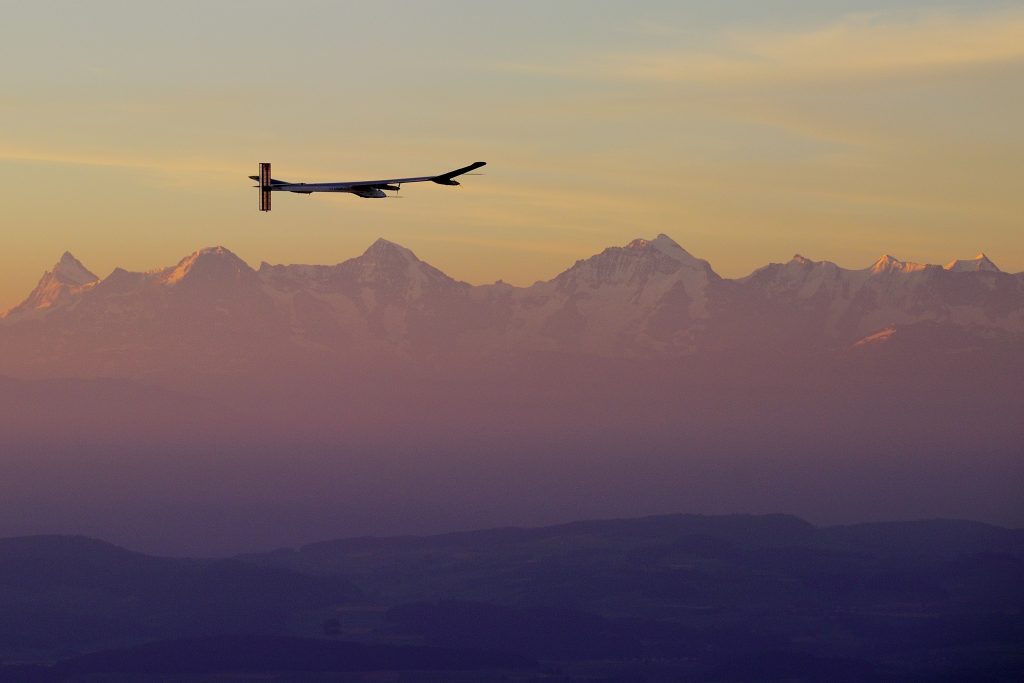
Le premier vol Solar Impulse a eu lieu en Suisse en juillet 2010 © AFP PHOTO/FABRICE COFFRINI/SOLARIMPULSE
Comment vous vous êtes préparé pour cette aventure?
AB : On s’est entraîné dans des simulateurs, sept heures pendant la nuit sans dormir et sans manger. Techniquement vous testez. Mais les émotions on peu pas les simuler. Les émotions c’est quelque chose qui se développent au cours du vol, c’est là où vous devriez gérer.
BP : Moi, j’ai utilisé l’auto-hypnose pour gérer ca. André le yoga. Dans le film vous voyez André faire le yoga au cockpit.
AB : Il y a la coté physique et puis, il y a un coté mental. Vous avez des techniques de respiration pour vous soulager du pression de l’extérieur. Prendre un peu de distance par a ce qui se passe et calmer le flux d’idée, le flux de pensés que l’on a dans le cerveau. Donc ca permets de réposer le cerveau sans dormir. Ce techniques il faut s’entrainer – moi je fait pendant dix ans et Bertrand a développé sa technique d’auto-hypnose.
BP : C’est vrai que j’ai utilisé l’auto-hypnose pour rester éveillé dans Solar Impulse et on peut aussi l’utiliser pour dormir, mais il y avait tout le temps des alarms donc c’est trés rare de pouvoir faire vingt minutes de suite. La masque à oxygène est extrêmement désagréable et j’ai utilisé l’autohypnose pour être bien. C’est super bien pour augmenter l’energie du corps, en effet j’avais moins de stress après trois jour en Solar Impulse que quand je prend la voiture pour aller à Zürich. C’étais vraiment marrant. Alors, maintenant quand je roule en voiture après deux heures je m’imagine que je suis deux jours au Solar Impulse et je vais très bien.
Alors maintenant; c’est le anti-climax? Le fais que la grande aventure est fini?
AB : Il y a un mélange des differents sentiments. Il y a un nostalgie et finalement ca se fait pas parce que on est deux, mais parce qu’il y a une équipe dans le vol et autour du monde, 140 personnes.
Chaque personne qui a participée, si c’est le téchnicien ou la communication, a contribuée au succes de cette mission. L’équipe c’est des gens qui sont extrêmement proche parce que on a partagé des choses très forts. Quand on se sépare de ces gens c’est la nostalgie. La vol est fini mais le projet continue.
BP: On a pas chaumé depuis la fin du vol. On a pas eu la possibilité de s’assoir tous les deux, André et moi, pour se dire, “Ca y est. On a réussi!” Chaque fois c’est la course, des interviews, des cerémonies, des récompenses, des conferences, des film que l’on montre, des séances photos, mais le fait de s’assoir et se dire, “On a réussi, on profite”. Ca on a pas pu faire.
AB : On a un livre qui sort fin janvier, et j’ai impression que ce là ou on pourrait vraiment finir notre tour du monde.
BP : Après la dernière atterissage on a su que l’on allait réussir. Il s’est passé tellement de choses.
AB : Tout le monde nous a surexcité pour éviter de faire la petite faute qui gâcherais tout. Vous avez une montée d’adrenaline qui est de suspense et qui donne l’energie.
Comme Lindberg quand il a traversé l’Atlantique.
BP : Quand il est venu la piste était totalement pleine de gens donc il pourrais pas d’atterrir toute de suite, il a du faire la passage à l’écart.
Aujourd’hui, pensez-vous que les gens ont vraiment compris votre reussite?
BP : Il y a des gens qui comprennent et il y a des gens qu’il comprendront jamais. Vous savez, il y a des gens qui n’ont pas de capacité d’imagination. Il y a des gens qui disaient que la premier avion sert à rien. Il y a des gens qui ont dit que la première voiture servira à rien. Parceque, autre fois avec une voiture il fallait qu’il y ait quelqu’un qui marche avec un drapeau pour avertir les piétons qu’il y ai une voiture qui arrive. C’étais considéré comme sans avenir. Il y a des gens qui ont dis que les ordinateurs ca arriveraient à rien.
AB : Comme le téléphone…
“Vous avez, il y a des gens qui n’ont pas de capacité d’imagination. Il y a des gens qui disaient que la premier avion sert à rien.”
BP : Mon arrière-grand père – quand il avait installé le premier télephone en Suisse dans son bureau et à sa maison, il a invité tous ces collègues qui étaient des professeurs de l’Université à Bâle, et tous ces collègues ont regardé quand il a dis “J’ai téléphone à moi femme.”. Il a téléphone à sa femme et ces collègues ont dis; “Ecoute, Jules, c’est trés intéressante mais ca n’a aucun avenir!”.
Alors pour nous, Solar Impulse, c’est le début de quelque chose nouveau, un noveau cycle. Il y a des avions electriques dans dix ans avec moins des 50 personnes pour des courts courriers. André a des trés jolies idées pour le moyens de transport urbans electriques.
AB : Depuis qu’on a commence il y a treize ans il y a eu une evolution. Il y a Tesla qui ont fait la voiture électrique avec la prise. Solar Impulse prend l’énergie du soleil alors que vous pourrez prendre votre energie où vous voulez. C’est pas perdu comme un moteur au piste où le deux tiers de gaz que vous émettez serviraient à rien. C’est la chaleur, c’est perdu. Deux litres de pétrole sur trois, think about it! Donc l’énergie électrique est efficace, s’est silente. Ils developpent des avions électriques qui peuvent décoller verticalement d’un immeuble à l’autre. C’est le vertical take off, autonome, silencieux, et sans de pollution. Ce qui était la science fiction dans les bandes dessinés il y a dix ans est devenu la réalité grâce a la propulsion électrique. Ce qui était une énigme il y a treize ans devient la realité.
BP : Et puis, maintenent Solar Impulse a fait bouger la coté technique. Alors maintenent il y a la côté politique, de faire écouter les politiciens, et ca c’est le but avec iMondial pour rassembler toutes les professionnels de cette téchnique de manière à pouvoir créer une immense réseau qui amène des solutions. Dans moins de deux ans je me suis engagé à trouver milles solutions et les rendre rentable et efficient pour protéger l’environment. Les gouvernements ont besoin des négociations politiques. Alors, ce qu’il faut c’est des moyens et des solutions techniques pour y arriver là à ce but. Sinon c’est le wishful thinking.
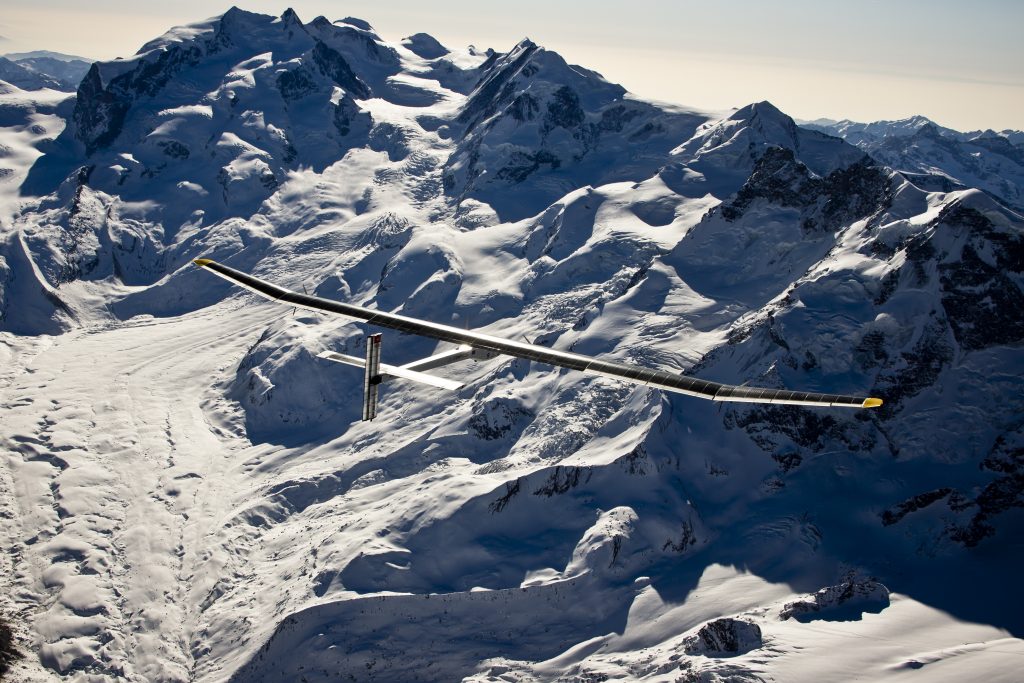
Un vol solaire en 2012 – trois ans avant la première étape autour du monde. Les 40,000km sans carburant étaient une première pour les énergies propres.
Qu’elle est l’avenir avec Donald Trump qui veut réintroduire le charbon?
BP : S’il veut la croissance, il sera obligé de développer des techniques écologiques. Parce que c’est ca qui fais la croissance; pas les vieux systems. Vous avez des voitures électriques, des lumières led, des panneaux solaire, tous ca c’est nouveau.. mais il voudrais aller en arrière avec le charbon.
Donc vous faites le lobbying pour ces techniques?
Quand j’annoncé l’alliance de iMondial il y a eu énormément d’espoir. Ils attendent tous de cette travail, même les G8. J’ai parlé beaucoup aux hommes politiques. Ils sont tous un peu dispersé, ils savaient pas comment l’utiliser. Ce qu’il faut maintenent c’est de faire le lien entre ce technique et les hommes politiques. C’est le but de la fondation.
Vous saviez tous ca quand vous avez commencé cette aventure?
BP : Moi, c’étais mon but. C’étais pour avoir un outil crédible qui puisse communiquer ces techniques écologiques.
AB : Nous avons des partenaires qui viennent des differents cotés, c’est pas des partenaires aeronautiques. C’est la chimie, la technique, les ascenceurs, les gens qui deplace des gens qui voudrait le faire d’un maniere efficace. Donc ils souhaitent de trouver des solutions efficaces. Toutes les produits qu’on a crée ils trouvent leur places dans d’autres applications. Par exemple le batterie va maintenent aussi dans des refrigérateurs pour les rendre plus efficace avec moins de consommation d’energie. C’est sont des solutions simples. Mais c’est là où on fais des économies. C’est là où on va changer.
BP : Au Cop 22 il y avait un interêt enorme, c’étais un méssage positif, un message d’espoir. La receptivité des gens sur place étais extraordinaire. Le Maroc a une programme extraordinnaire. Le roi a un but d’avoir 52 pourcent de l’energie vert dans 30 ans. Il va y arriver.
Finalement, dans une année sombre Solar Impulse étais une rayon de lumière.
BP : Ce ca que le médias ont pris – l’espoir.
AB : On veut montrer que les choses impossibles sont réalisables. Notre projét montre que ce qui a l’air difficile et impossible est quand même faisable. Ca ouvre chaque fois le monde quand on discute avec les gens. C’est la plaisir aussi – le chemin pour y arriver étais la meilleure partie de ce projet. ©
Solar Impulse au hangar. La propulsion électrique, le ‘H55’, est la dernière aventure d’aviation dirigé par André Borschberg.
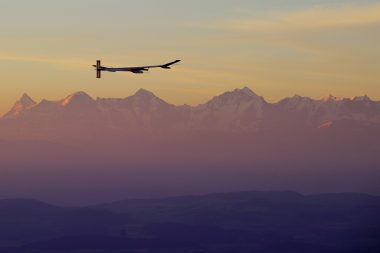
Raising the bar

At only 17, Reed Kessler was selected to compete at the Olympics as the youngest rider ever. She’s since been no. 1 in the US and she’s run her own competition stables in the Netherlands. At 24, she’s back to school again.
By Camilla Alfthan, photos Reed Kessler
”I’VE BEEN riding my whole life and my parents have been riding for over 30 years. My dad was my trainer, Katie Prudent’s first customer and Katie is my godmother so I’ve always ridden.Even when I was younger I was always the younger person doing bigger classes than most people their age. I started doing the senior international classes when I was 15 so I’ve always pushed myself ahead to do bigger things. Katie always pushed me to do bigger thing so that’s probably why I’ve gotten here so fast,” said Reed Kessler when we met at the Gucci Masters in Paris back in 2012. Just one year later, Reed became US National Champion while her all-time favourite, Cylana, a Belgian warmblood, was named Horse of the Year in her native country.
ABOUT STARTING EARLY
”I’ve been competing my whole life. I first sat on a horse when I was six months old. My parents used to put me in a basket and tied it onto my little pony and then they would tie my stuff onto the trees so I would steer to get them. My whole life has been about riding and following my parents who competed in amateur shows. It runs in the family and it was all I ever wanted to do. My parents and I are very competitive. I love horses. Before my dad’s career really took off we would have one or two horses at home and my mum and I would take care of them and the pony in the back yard. Besides just riding I love taking care of them. Its been part of my whole life.”
“I was always the younger person doing bigger classes than most people their age. I’ve always pushed myself ahead to do bigger things.”
HER HORSE POWER
”They’re a little bit like my babies. My guardian was my first junior horse who is one month older than I am. I had him for six years and I first rode him in the children’s classes, and then high junior. When I went in the seniors he became my speed horse. It’s like I had him forever. And we would always joke that he was my boyfriend because he was one month older than I. Another old friend is turning 19. I gave him to my father who is doing some smaller classes on him. I love him so much. He was getting a little old so it was time to step down. When I was younger I’d ride a lot of other peoples horses and ponies. Now, I have a great string of horses. Cylana is my best well known horse since I took her to the Olympics, and I also had a second horse that finished as second reserve for the games. His name is Mika. And I have a couple of speed horses that fill in the gap but those are my two big horses.”
“Cylana is my best friend. She’s a spectacular horse, in my mind she is the best in the world. An amateur in Switzerland had her and he was only doing small one star classes. Then the a family bought her and she did a few, small classes with their daughter – 145cm but never anything bigger. When we got her she was unfit and a little fat and in a very short time she went from having no experience to jumping clean in the trials. It’s like shocking how quickly she turned around. I can’t say enough good things about her. She’s incredibly smart. Every time you ride her she wants to do exactly what you tell her and quickly. She’s way smarter than a horse. And she has the biggest heart of any horse I’ve ever sat on.”
In Miami Beach on Cylana – Reed’s favourite of all times
HER FIRST BIG MOMENT
”My first big moment was the Olympics trials. No one including myself expected me to do as well as I did so that was a huge moment. Besides just being around this incredible group of good riders I was also there with this incredible group of athletes. To think that we were all there and had earned it was just crazy.” And then from there it was just to prove that I could do it consistently, that it was not just one spectacular week. So it’s about being consistent. Kentucky was a big moment. And then Calgary couldn’t have gone anybetter, we just dominated it so that was also special.”
”I’m one of those people who really likes pressure. Sometimes when there’s not a big enough atmosphere or when it’s not as important a show it can make me a little casual.“
Chilling out in Spain for a photo shoot with Manfredi Equestrian.
DEALING WITH PRESSURE
”I’m one of those people who really likes pressure. Sometimes when there’s not a big enough atmosphere or when it’s not as important a show it can make me a little casual. So I really like high pressure situations, where there’s no room for air. It brings out the best in me and I think it brings out the best in my horses to. They sense it’s a big moment and that that’s important. 2012 was the first year that I was old enough to do the two stars. I try to stress that as much as I can. I’ve had so much success in the past year but I’m only a teenager.”
KEEPING UP SPIRITS
”There’s always ups and downs in the horse business. Dry spells. I’m so lucky to have a good group of horses but anything can happen. So you should really enjoy every show at the time. I’m having fun. Every experience is a new experience at this level. Maybe when you’re older, you’re like, oh I showed in the Paris Grand Prix ten times and its nothing new. But when your my age everything is new, everything is exiting!”
BUSINESS & FUN
”We stayed at the Fursan stables in Chantilly a few days before the show, and then we went to Paris. Some friends came here to do the two star; they’d never showed in Europe. We went to the Gucci party and we’ll go to Paris tonight. I’ve shown in Paris since I was thirteen. It’s a crime, really, not to enjoy the city when you’re here. We’re so lucky that many of these shows are in the most beautiful places. We get to travel the world and see all these incredible places while we are working. I was raised at the horse shows. So my whole life was going from show to show every week. I’m never home. And that’s how I was raised. So when I do stay at home a few days it’s weird and I don’t like it. I’m more at home in a hotel room.
“My whole life was going from show to show every week. When I stay at home a few days it’s weird and I don’t like it. I’m more at home in a hotel room.”
When we’re in Florida, where we have a farm for the tour, we’re there for four months and everyone from the horse show is living together and you’re all at the show. So its not like being at home because there’s so much to do and everyone is around you. But when we’re in Kentucky its a little more quiet and after I’m there for a few weeks I’m ready to travel again. I love adventure. I don’t like to sightsee or go to a museum. But food and shopping is how I like to discover a city. This is all I’ve ever done and I dont see doing anything else.”
HORSES AND LUXURY
”The sport has really picked up a luxury image now. Ten years ago you wouldn’t see a show like this. It always had a lot of prestige but the sport has developed, there’s luxury brands, luxury sponsors. The Global tour is fantastic, with fantastic prize money..it draws in people like the more mainstream sports. Technology has developed. Everything is streamed live which has made the sport more accessible. I think it is really cool that the sport is becoming so global. The technology that we can now go to places around the world. If you have a horse that travels well…it’s just another plane ride.”
Reed Kessler on her horse with the apt name; Cos I Can, photo Sportfot.
IMPROVING HER SPEED
”The speed is something I’ve really been working at. Sometimes I’m not as good at turning back and Katie’s been working me really hard at home to get better. So I’ve been really competitive in each jump off and I’m really proud of myself that I was third in the speed challenge. That’s a very fast class with the fastest riders. So to finish third was impressive for me. Last night was big too, I was just 200th off of Christian Ahlmann’s time. So I’m really happy with how its going. My skills have improved so much. If everyone was turning on seven or eight strides I did it on six. I’ve been really competitive in jump offs and I’m really proud of myself.”
HER SUPPORTERS
”Everyone’s been great. Even if its only my first year doing above the two stars I’ve been in the senior division since I was 15, so I’ve shown against most of these people and we know each other. My parents are my mentors, but mostly Katie. Katie is highly respected over here so when you’re with her people treat you nicely. I grew up most of my life 45 minutes from Manhattan and I went to high school on West 60th right across from Fordham University so I’m a New York City Girl at heart even if we just moved to Kentucky. We’re a really close family. My parents are the best parents you could have for this show. They are so supportive. Even though they do the amateurs they’ve been riding with Katie for many years; they’re extremely knowledgeable. I can talk to them about the course, and they can help me and give me advice. It’s a huge benefit. It makes us really close. It’s hard for people who grew up with people who didnt ride. They ride great. My mum did the one star here last year. She won like every single class. ”
A LITTLE BIT LEFT BEHIND
”The sport is not as well known in the US and we have nothing like the shows in Europe. Besides Washington DC the atmosphere is not the same. We would never get a crowd as big as here, even yesterday for the 1.50 class it was packed which I think that is terrific. If I go to a show in the States, I have to put up thousands of dollars of entry fees and stall fees. Here it is free and the prize money is better, just as the atmosphere and the crowds which are amazing. It’s great if Europeans will show how a really professional, glamorous five star show should look like.
“I’d love for my country to have the strongest shows in the world. That’s how it used to be.”
We used to have Madison Square Garden, but that was before my time…When you look at the pictures it was something special. New York socialites would come out in gowns and dresses. It was a huge social event. No one could miss it. Everyone who was anything was there and it had a fantastic atmosphere. After it ended the sport lost a lost in our country. We’ve had great shows and great money. We have some of the greatest riders and shows that have a lot of history. The sport has become more modern, but they are still a little bit left behind.
This fabulous bar, the schooling area where everyone can watch, the screen, the high end sponsors…all of it is missing at home.The biggest thing we miss out on is the atmosphere. When the three best riders here are interviewed during show is really special. They play loud music and get the crowds really excited…We try to explain it to our managers but they have to see it for themselves and bring their pen and paper. I’d love for our country to have the strongest shows in the world. That’s how it used to be. The best would come and do our Nations Cup indoor. They were fighting for who would get to go over there. So I’d love to help to get us back to that point. We have the North American Riders Group that my dad is on the board of. I hope to start taking part in it. I was a little too young before..hopefully I’ll start getting into it.”
ONE DAY YOU’LL LOOK BACK AND SAY….
”That was crazy! I’ll have a bad 17 year old daughter and I’ll say, ”when I was your age I was…go do your homework!” We were joking last night that it is supposed to be the end of the world on December 21st. And I said; if the world ends I did all possible to see her. I’ve had the year of my life and I’m ready to go. © Interview at EEM Masters.
Reed has returned to New York where she attends Columbia University and continues to show on a reduced schedule, which now includes the Longines Masters of New York.
Reed speeding in Paris.
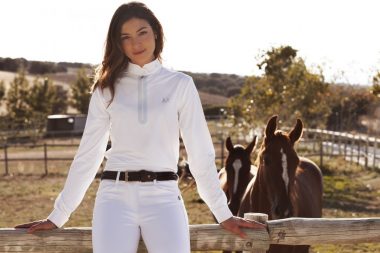
Jean Rochefort at the museum
The Derby by Gericault.
For the actor, Jean Rochefort, it was the horses who inspired him to write the bestselling book, Le Louvre à Chéval.
By Camilla Alfthan
”EQUESTRIAN ART is the result of two species that find confidence in one another. The painters were aways interested in the horses. Their aesthetic beauty, their sensuality and the mystery of the horse always inspired artists,” said Jean Rochefort during a chat between classes at the Gucci Masters show in Paris. When a friend from the Louvre asked him to co-write a book which examines the cultural link between horses and mankind the result was a visual tome peppered with comments and anecdotes.
”There are some very beautiful images and some humour, too. I received letters from children who discovered painters thanks to little bits of fun. In art it all becomes very serious. But it has to amuse you and create emotions so it can’t be serious. Art is made for happiness,” said Rochefort whose own favourite oeuvres were by Delacroix – “A master whose brush strokes are beyond comparison”.
“In art it all becomes very serious. But it has to amuse you and create emotions so it can’t be. Art is made for happiness!”
The actor, a regular at the French show jumping events, had come to Paris with his wife to watch their daughter compete on the family’s homebred horses.
”Here it is too much showbiz like Cannes. It’s very peculiar. I was a part of this competition from the beginning and I would prefer if it was more about the sport than about the people; if you understand what I mean. I call it restaurants with horse shows. When people eat and forget to look,” he said with a shrug while one of Paris’ little Green Men, un technicien de surface, began to clean our table with a cloth and spray.
Rochefort at his haras in Normandy.
The equestrian world is very special. How did you enter it? In Bretagne my grandfather had carriage horses to take the tourists sightseeing. His interest skipped a generation. So for me, it all began when I was riding in a film. It was like an electric charge! My life changed because of that! I have since bred horses and my daughter continues and my wife as well. It’s an enormous passion. All species interest me. Even homo sapiens. But less and less. I think we are lost. (Laughs.)
Animals are kinder? At least they have certain codes. A stallion fights with another stallion, the strongest one stays and the weaker leaves. But with us, humans, the weaker leaves and the stronger kills him anyway. He who wins kills. It’s only with the ants and the humans that this exists. The war between the same species only exists between ants and humans. And some chimpanzees. They are very close to us.
They recently discovered that two-three male chimpanzes will run great distances to other chimpanzee families just to kill a male and then leave again. And the reason behind this is not known. Many things are discovered these days, we begin to know the animals much better, non? In Le Monde they spoke about this the other day; the osmosis between mankind and other species, among them, the horses.
Which is the subject of your book; the relation between horses and humans. Voilà, in the old days, they worked for us, they obeyed us. Now we are trying to create a bond. It is this bond that you see in great performances. When I started sixty years ago horses did not have much fun. It was often violent work. With my grandfather you should not approach them as they were seen as dangerous monsters. That has changed a lot.
”In the old days, the horses worked for us. Now we’re trying to create a bond with them. It is this bond that you see in great performances.”
Equitation is an art form in more than one sense. Oui, equestrian art begins with the confidence between of two species that find confidence in one another. The horse is relaxed because he trusts the rider. In the art world, you see the approach between the artists and the animals, where the horses interested them the most. The aestetic beauty, their sensuality and the mystery of the horse always inspired artists. The book had a lot of succes all over the world, so I’m very happy and even very proud.
People easily forget that this art exists. Even 30.000 years ago man painted animals in grottos. It was magnifique. The bulls, the horses.. Without the animals there may never have been any painters. Because when the first drawings were made on walls, they painted their companions in life.
Do you collect equestrian art? Écoutez. I find that here, too, there’s been an evolution. Before, I found it very boring. Twenty years ago it wasn’t interesting at all. Now, when I see certain oeuvres they create an emotion.
The audience needs to be seduced.. Even in modern art when there’s wonderful absurdities and someone writes four philosophic pages to explain it that is not reasonable. We must have fun with art, it cannot be serious.
At a recent exhibition in Paris, I saw a video where a horse was skating on ice. I thought there was someting special and went to have a closer look. When I learned that the artist had made it because he’d had problems with his mother I was no longer interested. That there had to be a psychological reason for him to make the film made me lose all interest!
After that I saw three obstacles which were encircled by a long piece of rope so you couldn’t get too close to them. A drop of water fell on one of the obstacles every thirty seconds. I was fascinated and I saw something interesting there. After a while the guardian came up to me and said; ’Monsieur Rochefort, that is a leak…’ Funny, non?” ©
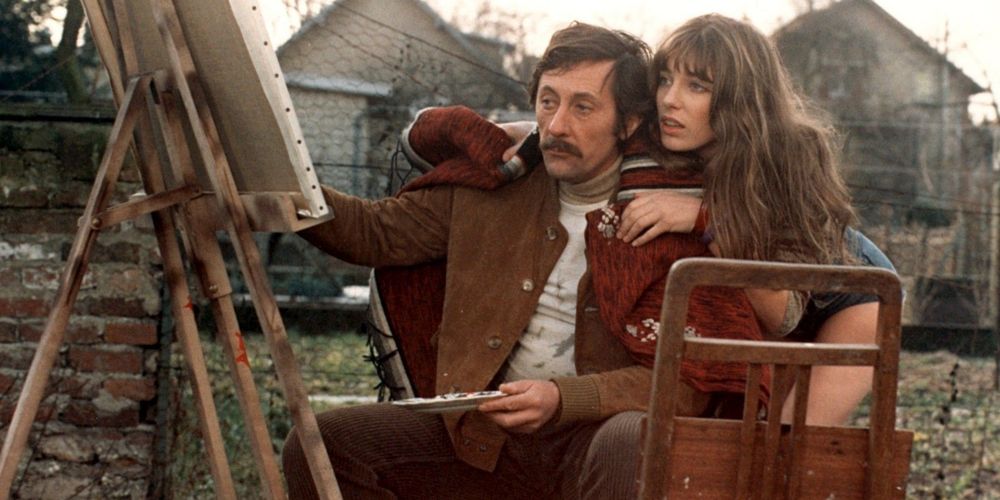 Jean Rochefort with Jane Birkin in the film ‘The Artist and his Model’.
Jean Rochefort with Jane Birkin in the film ‘The Artist and his Model’.
Le Louvre à Cheval by Jean Rochefort and Edward Vignot is published by Louvre Editions.
L’homme et le cheval, une relation millénaire
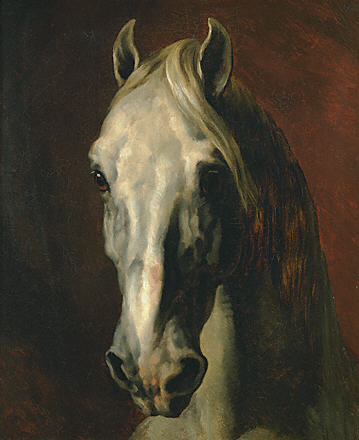
Delacroix’s portrait of a horse.
Alex Thomson
 How do you feel now after this long adventure – well rested or restless?
How do you feel now after this long adventure – well rested or restless?
I am feeling surprisingly well rested. After the 2012/13 edition it took a few weeks to get my sleeping pattern back to normal but this time I have managed to get back into a more regular sleeping pattern pretty quickly. I’m enjoying spending time with my family and friends and just getting back to normal.
The support during the race was incredible. My team sent me all of the messages of support from social media each day and it really did encourage me to keep going throughout the race. It was definitely a mental booster.
What was the toughest time?
The toughest time was when my starboard foil broke on my way down the Atlantic. Sailing the boat on port tack was difficult without the foil and the boat was incurring around a 30% speed deficit whilst sailing on that tack. It was extremely frustrating and it was very hard for me to remain positive and carry on fighting throughout the race at first.
Most sportsmen hurry on to the next event after they’ve finished – you got to stay and savour your feat with Armel and enjoy the atmosphere in Ollon. Is that a major thing about this race – to be able to digest it all and exchange experiences? How deep does the rivalry between skippers run?
Yes, the arrival back into Les Sable d’Olonne is incredible, from the channel, all the way to the pontoon and race village, there are tens of thousands of people waving you back in and the atmosphere is incomparable. Being greeted by Armel on the pontoon and being able to shake hands and share experiences from the race is an amazing feeling after competing for so long. Although we were fighting for first place throughout the race, the rivalry in this race can’t run deeply because when we are out there alone at sea most of the time the only people who can save us are our rivals.
“The arrival is incredible with tens of thousands of people waving you back in. Being greeted by Armel on the pontoon and sharing experiences from the race is an amazing feeling after competing for so long.”
What’s been the main difference in this Vendée Globe and the past one? Are you a better, more experienced sailor now than the last time?
I am definitely a more experienced skipper now than I was in the previous edition of the race. The main difference in this edition of the race though was the speed that these boats can now reach.
You broke the 24h record – what’s been the main difference between sailing this boat and the old one?
I broke the 24h record whilst sailing on starboard tack and using my remaining foil and it is the addition of the foils which has really been the main difference between sailing my new boat compared with my old boat. The foils are what makes these boats reach these new speeds by lifting the boat out of the water, creating less drag.
Is there, in fact, a conflict when it comes to making a faster boat which is also strong enough to endure the race?
There is a fine line between speed and reliability. You have to design and build a boat which is the fastest and yet reliable enough to make it around the world.
What’s next? You did a skywalk for Boss and other stunts – who comes up with these ideas?
I thought of the initial concept for each viral video. Which were then developed and made possible by the team. There are no plans as yet but watch this space.
Standing on the sky –
Despite a missing foil Alex Thomson came second in the Vendée Globe, just 16 hours after the French skipper, Armel Le Cleac’h.
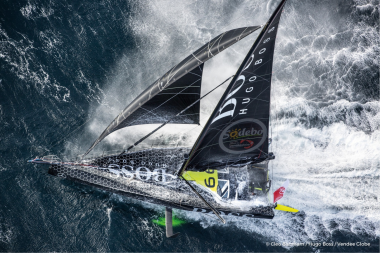
tennis, anyone ?
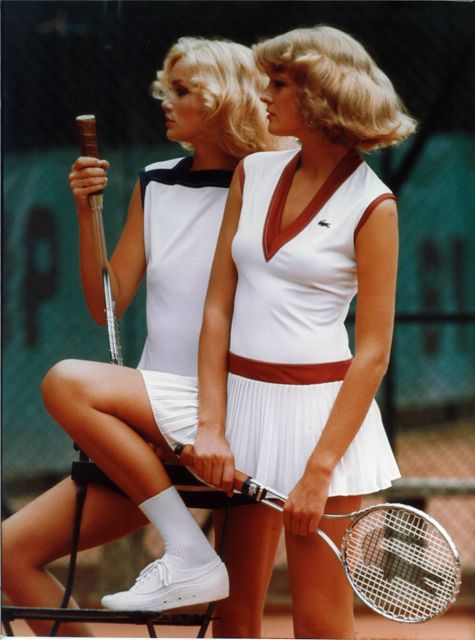 To most players, tennis is more than just a sport – it’s an entire philosophy. “The benefits of tennis is that playing it one develops the necessary character to succeed in any other activity,” said René Lacoste who used to say that confidence, tenacity, perseverance and rigour are the tools to find one’s way in life, along with intelligence – “intelligence on the court, the capacity to think and to execute strategy”. For the best of two worlds go to my interview with Martina Hingis on horse-tales.com – multiple grand slam champion a sensational 20 years after she won her first title!
To most players, tennis is more than just a sport – it’s an entire philosophy. “The benefits of tennis is that playing it one develops the necessary character to succeed in any other activity,” said René Lacoste who used to say that confidence, tenacity, perseverance and rigour are the tools to find one’s way in life, along with intelligence – “intelligence on the court, the capacity to think and to execute strategy”. For the best of two worlds go to my interview with Martina Hingis on horse-tales.com – multiple grand slam champion a sensational 20 years after she won her first title!
